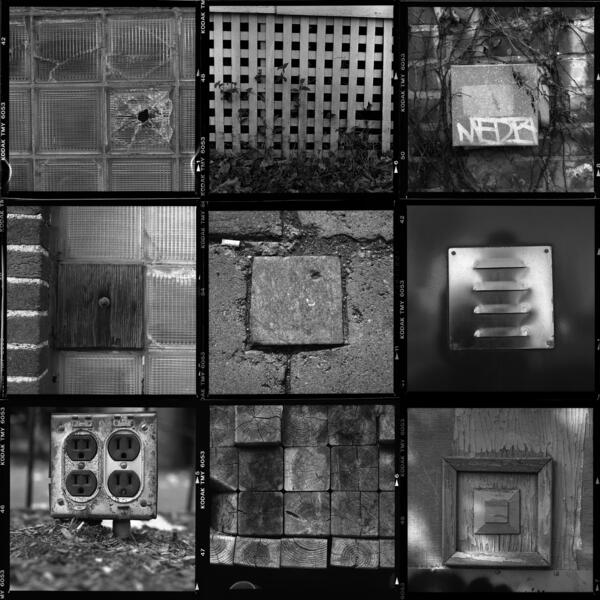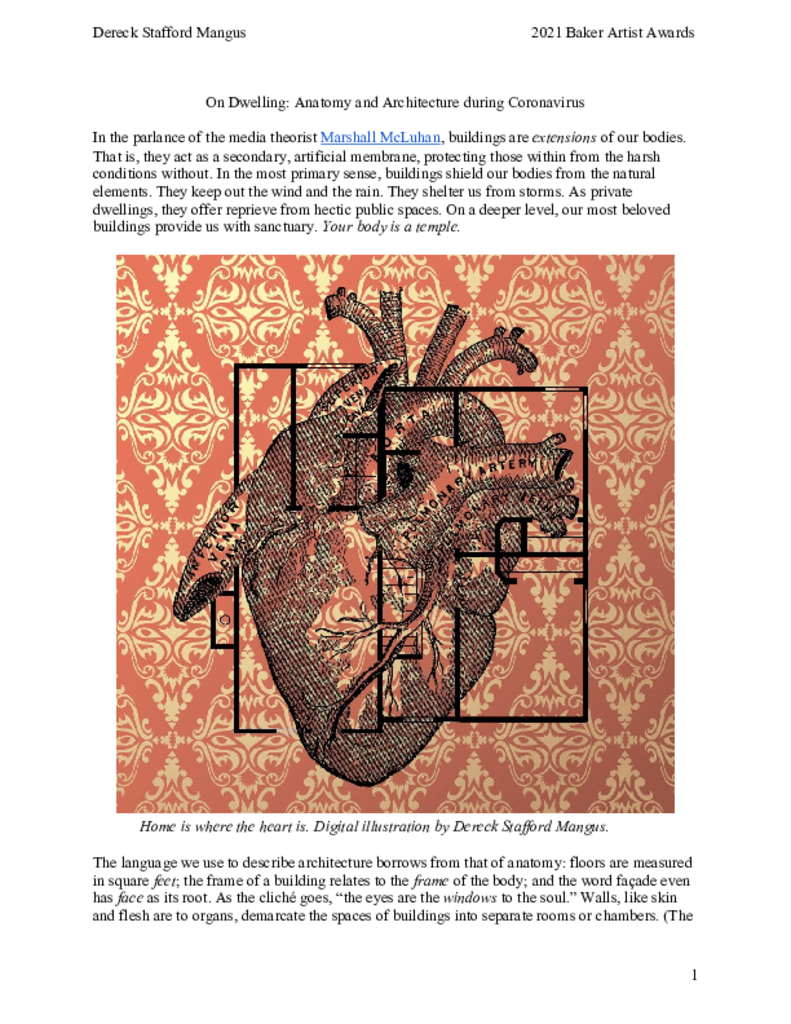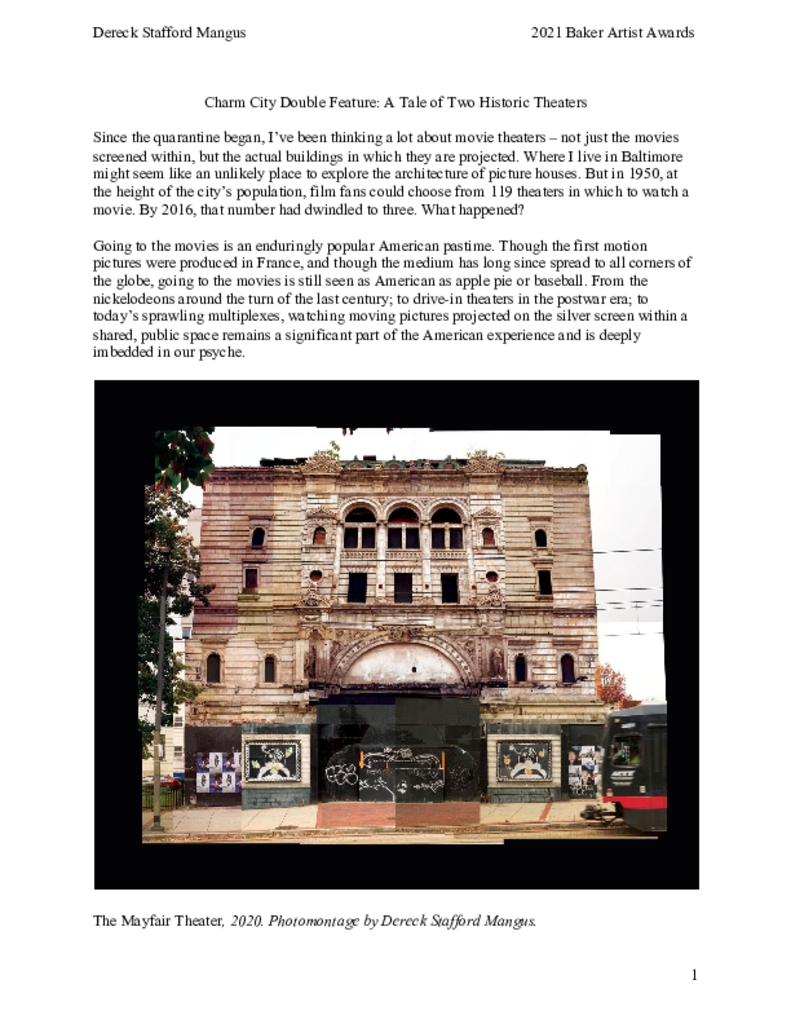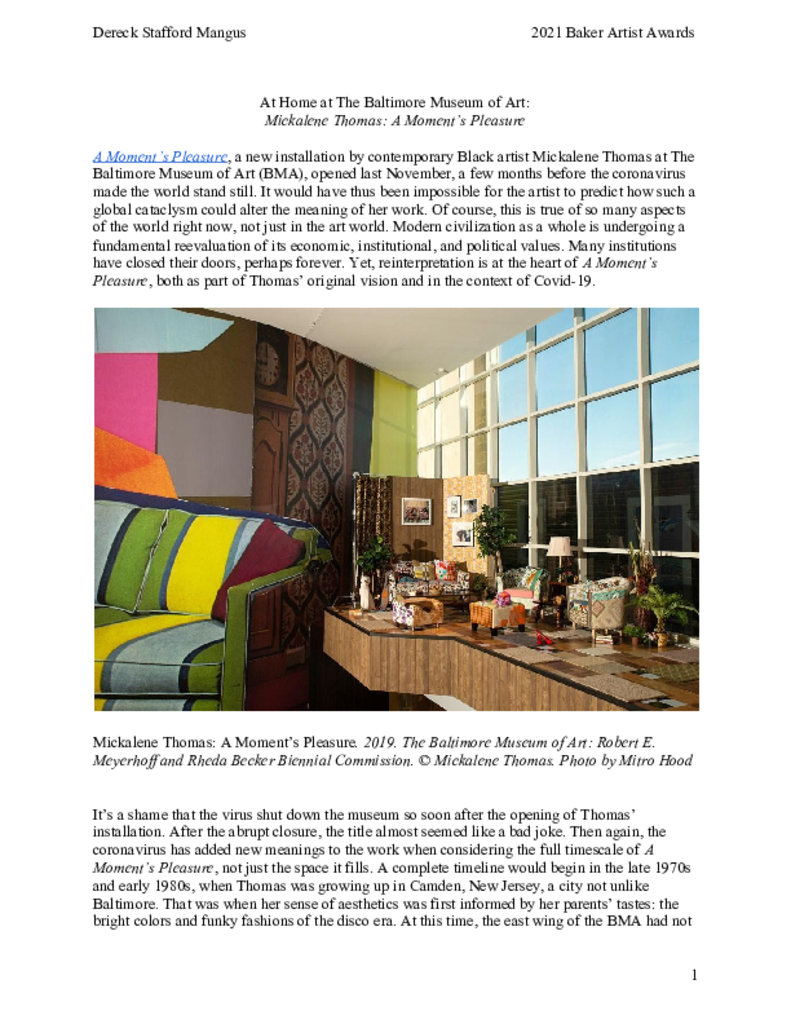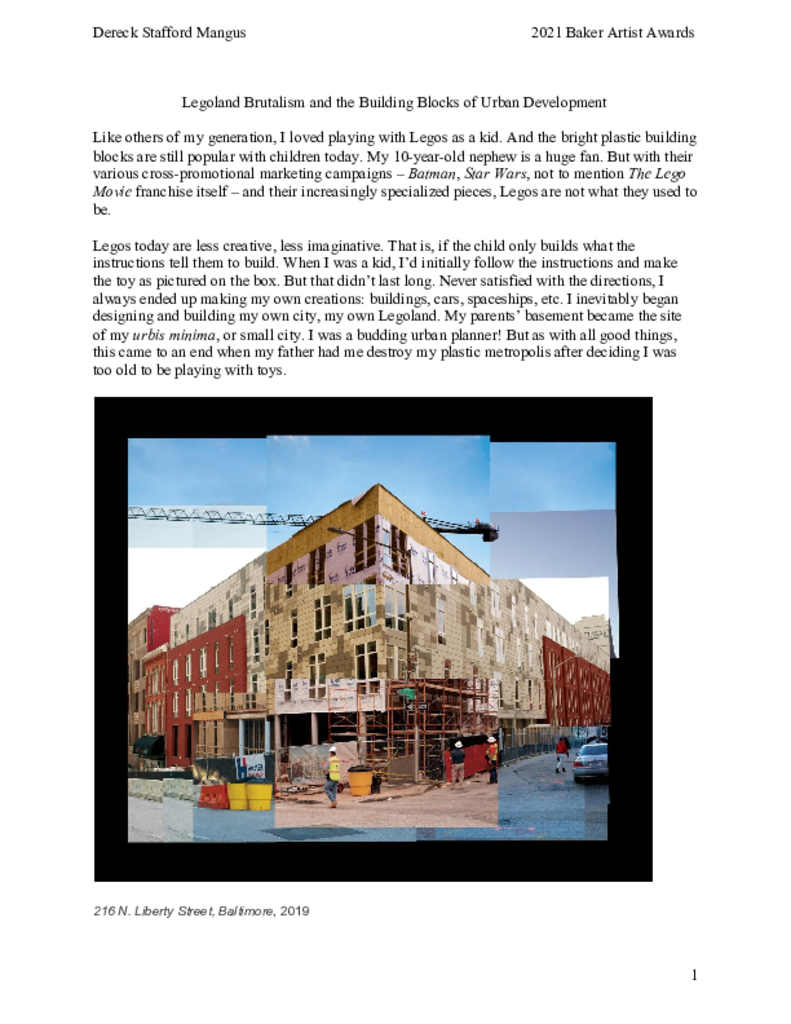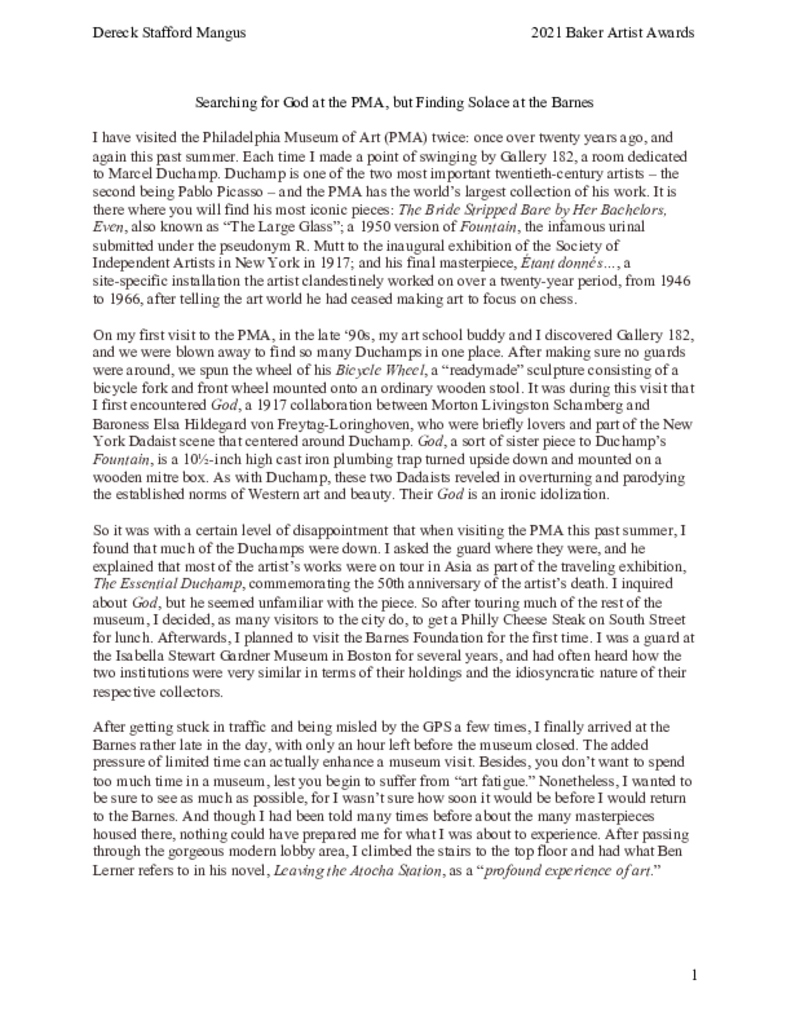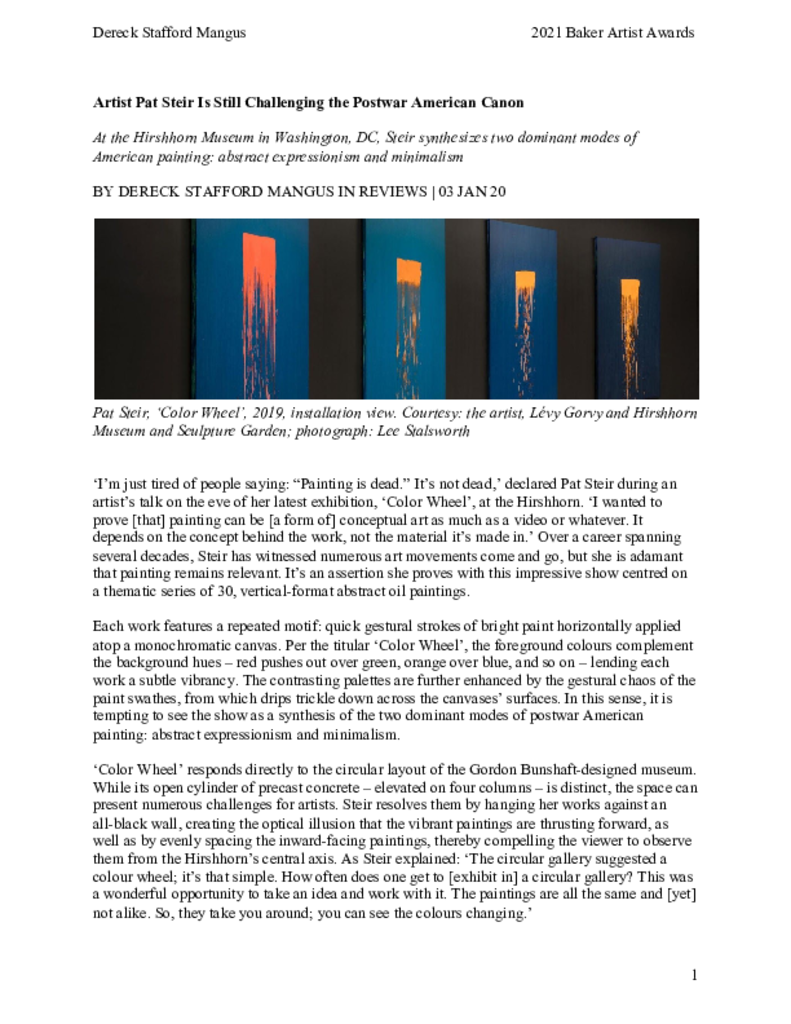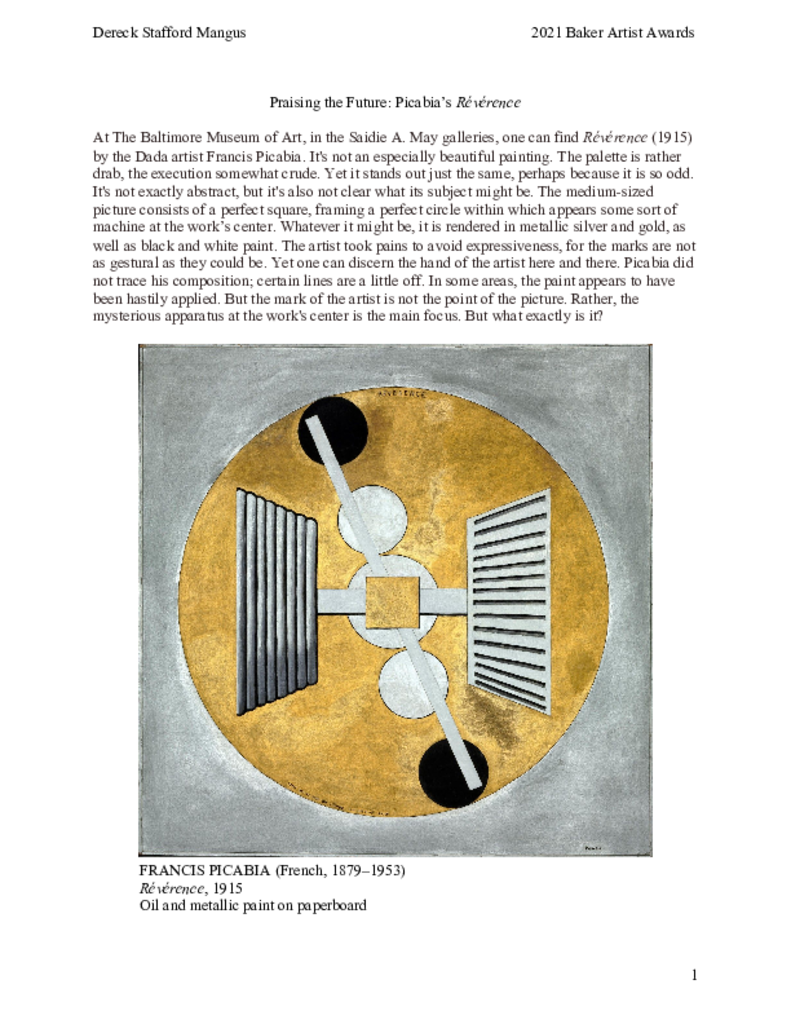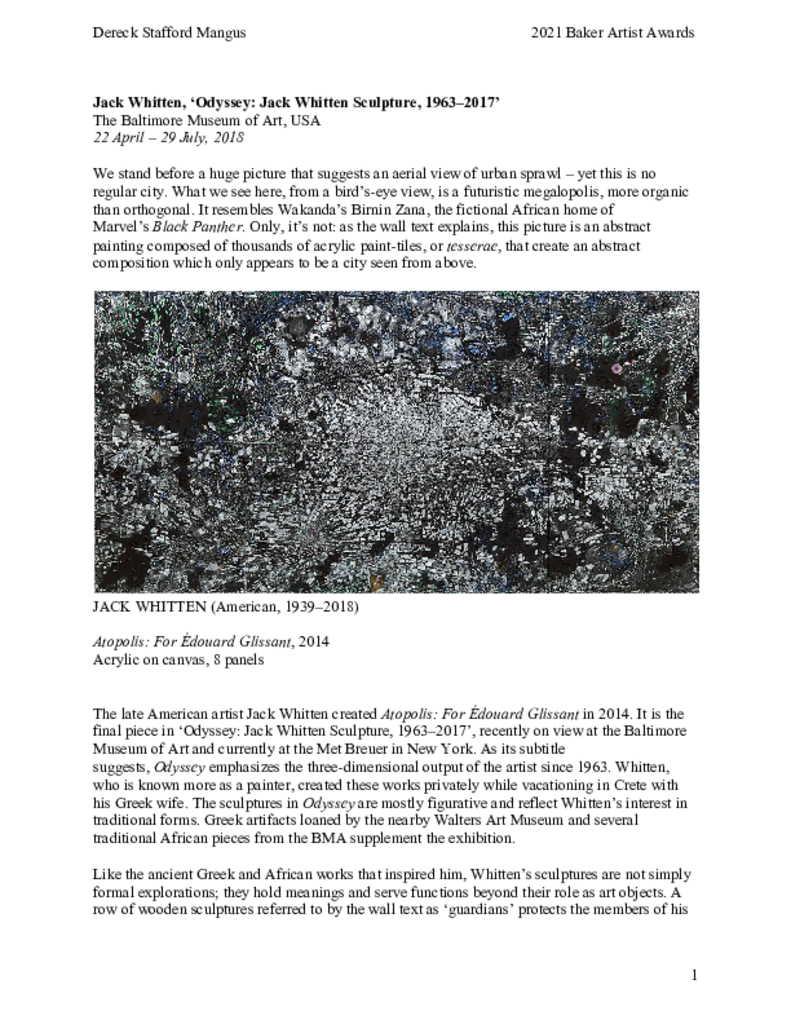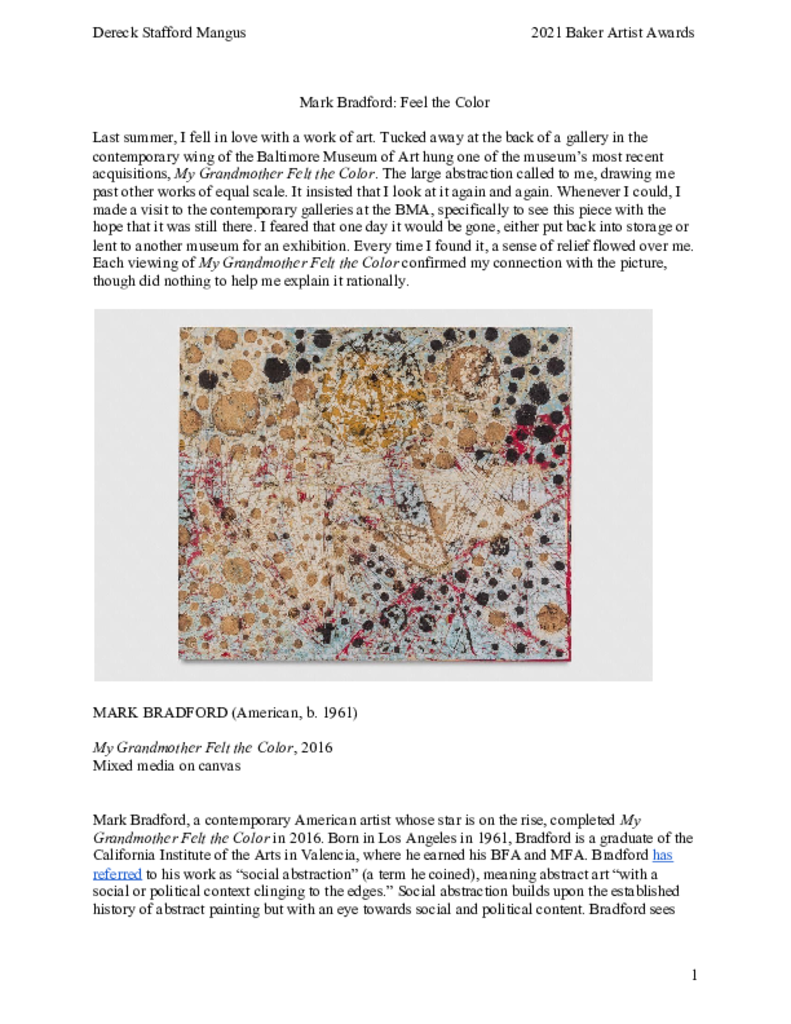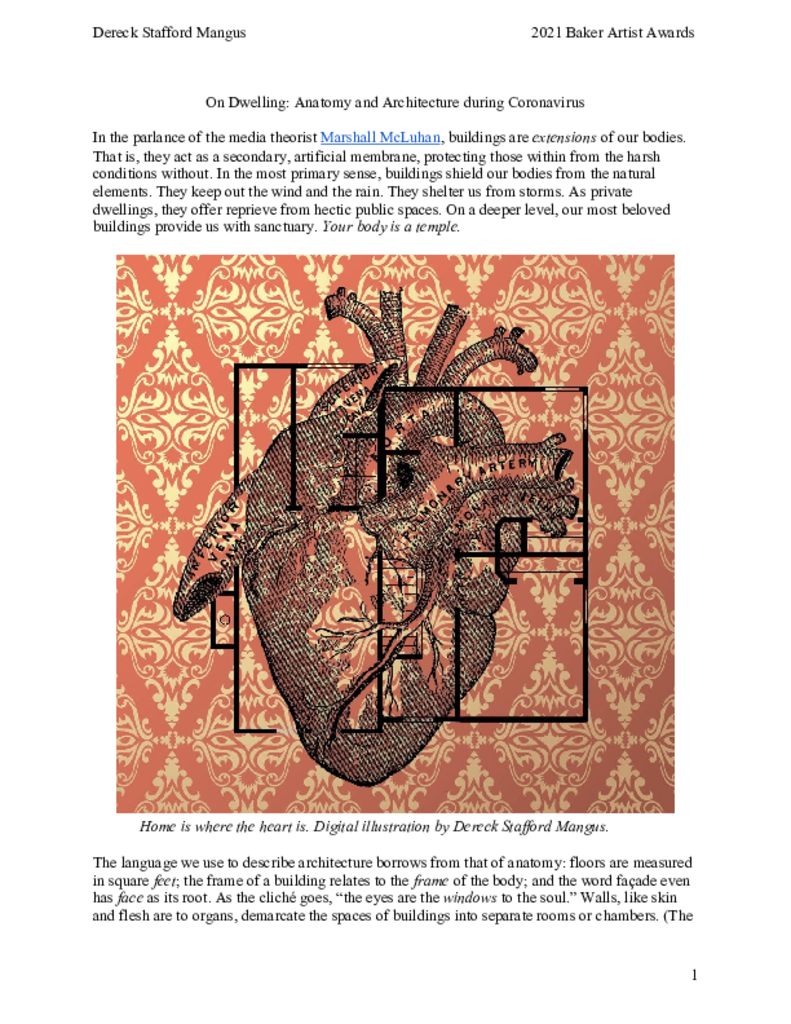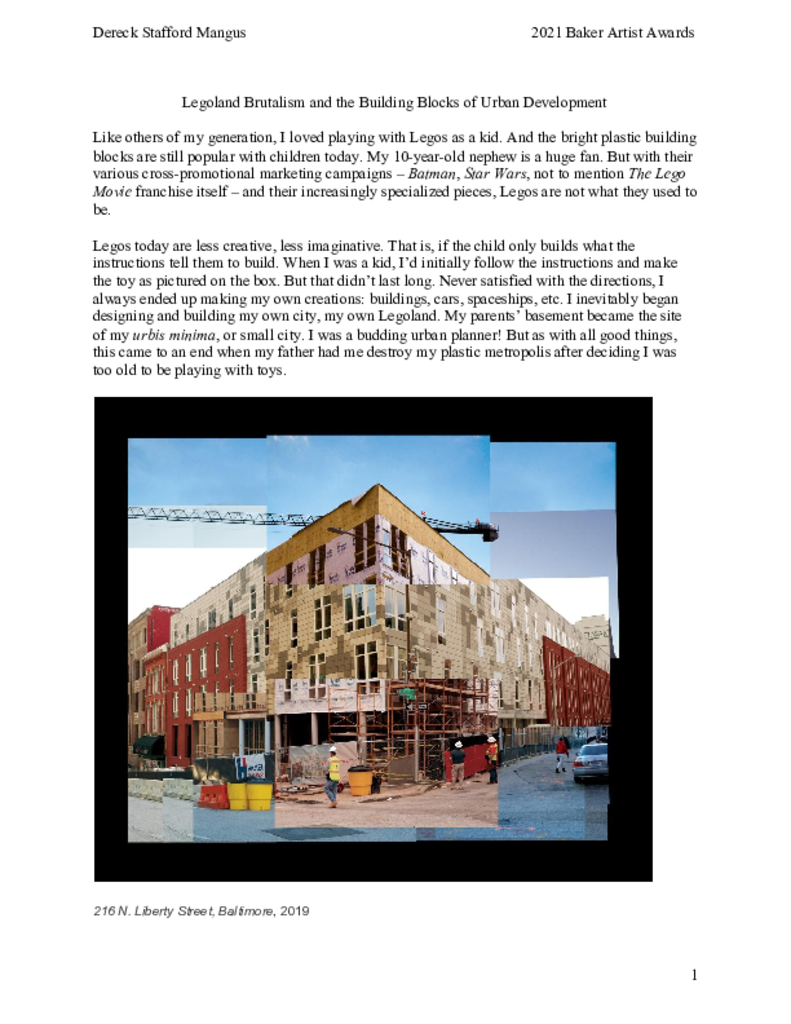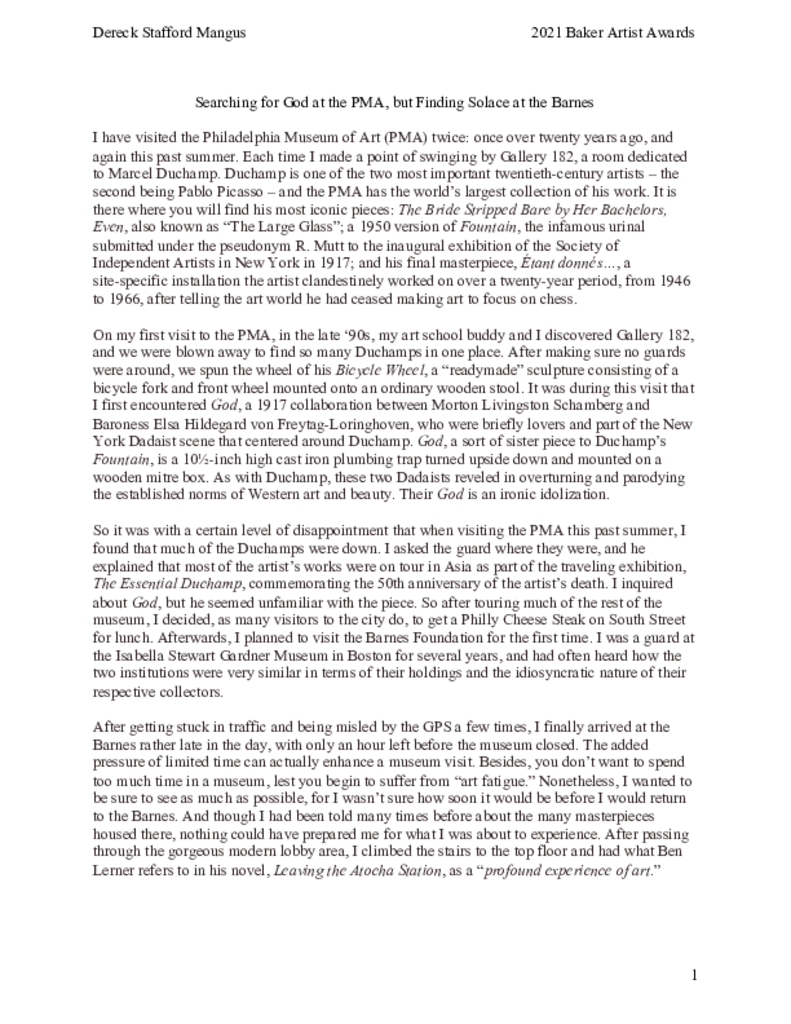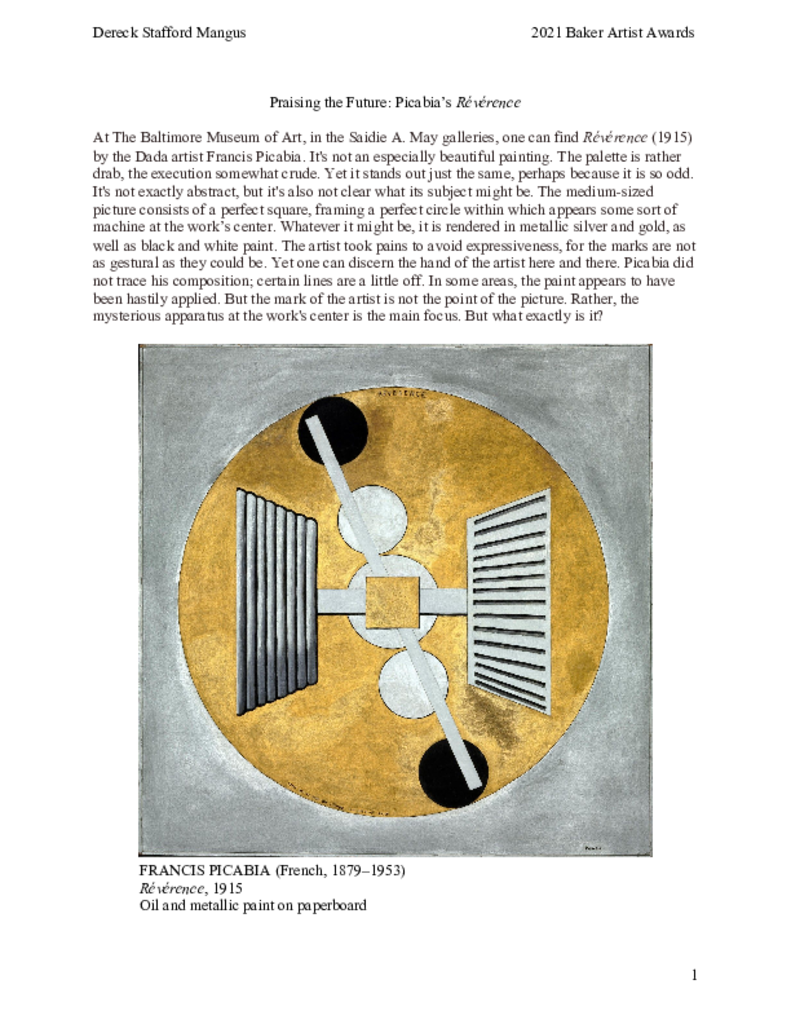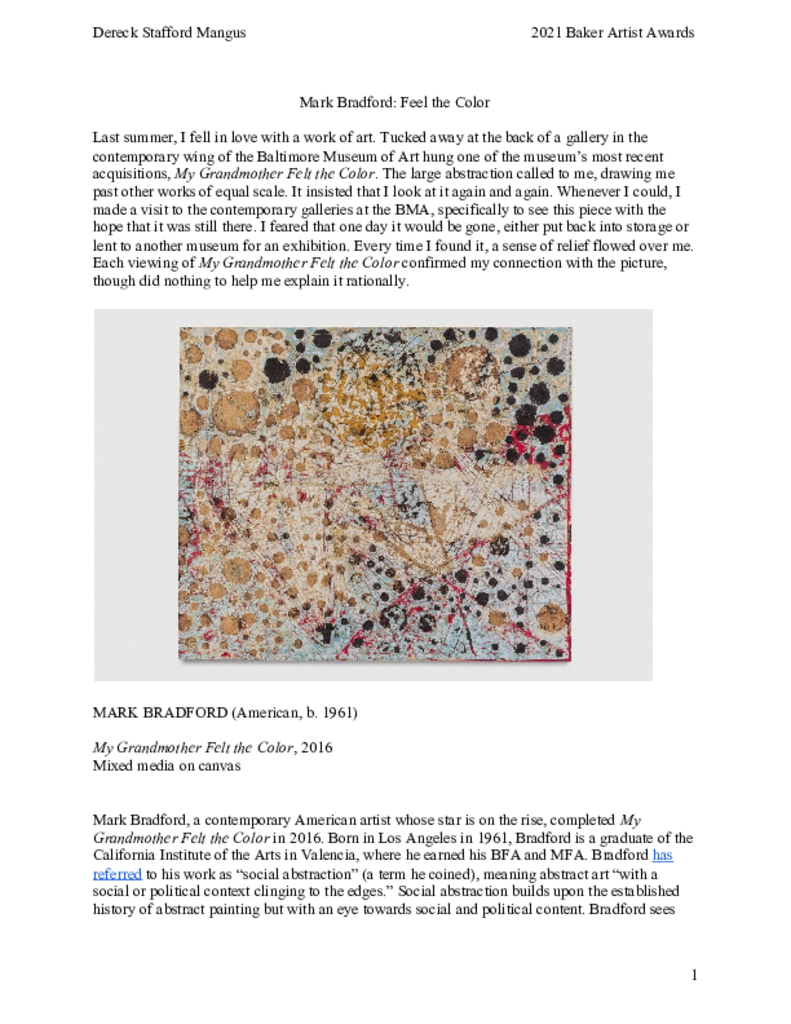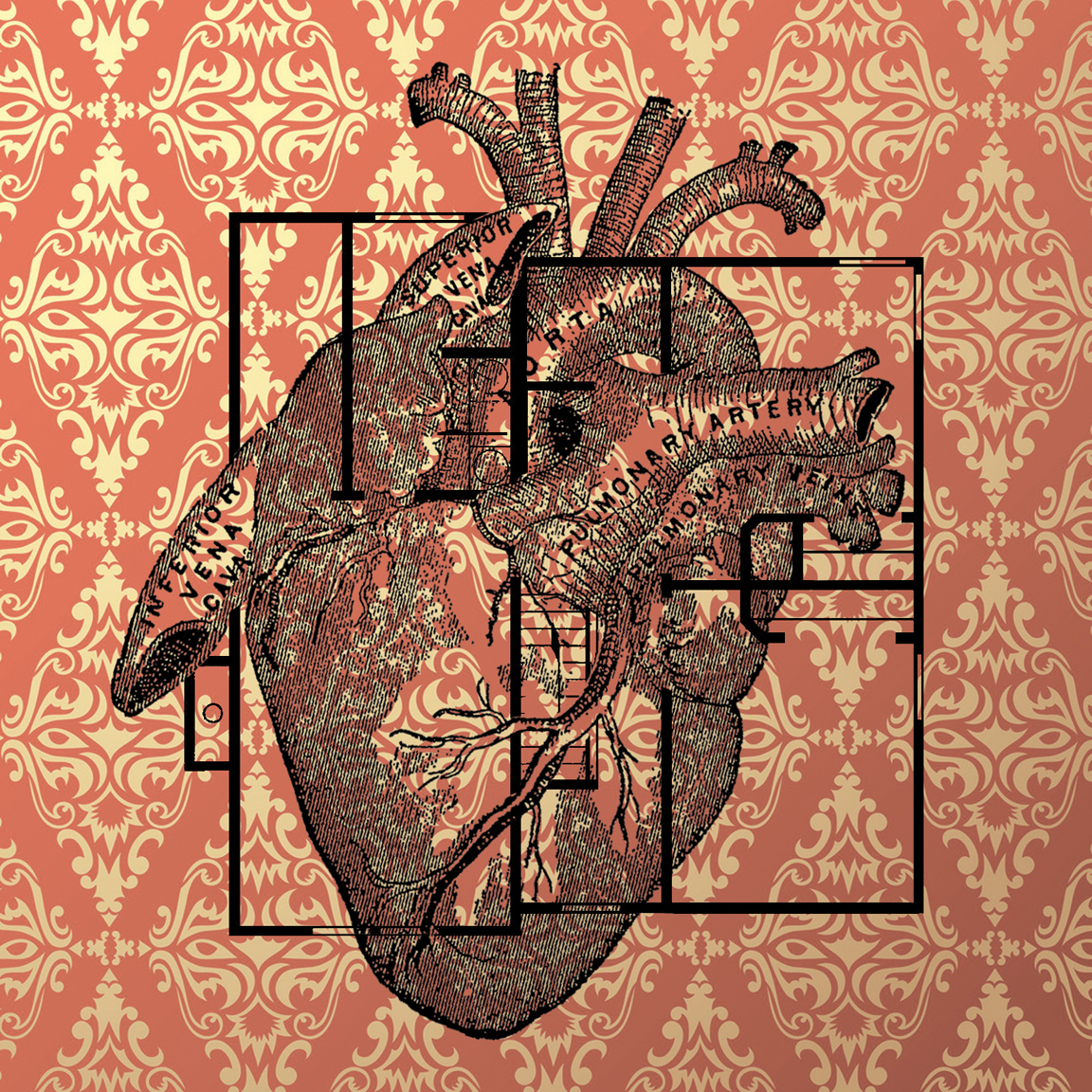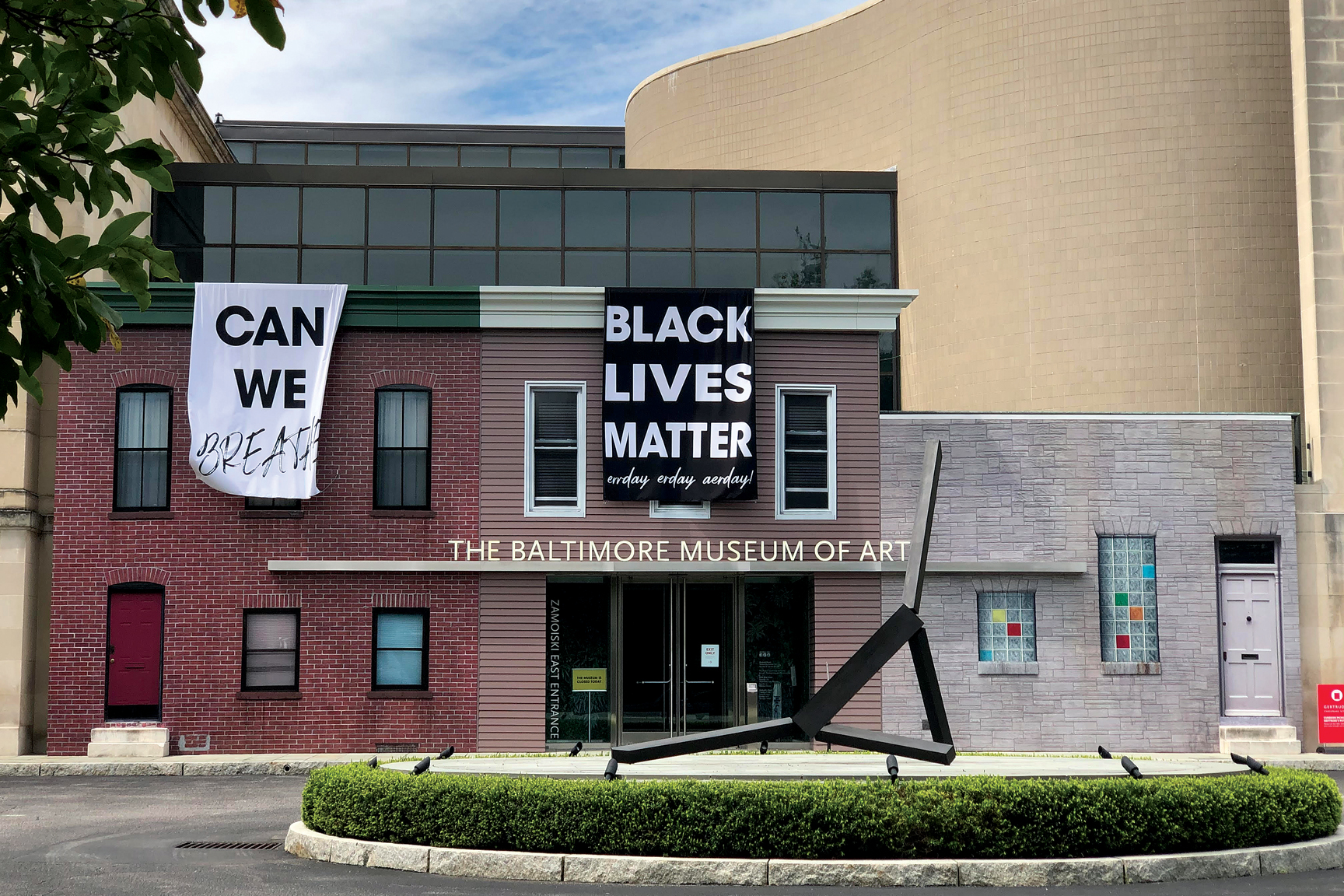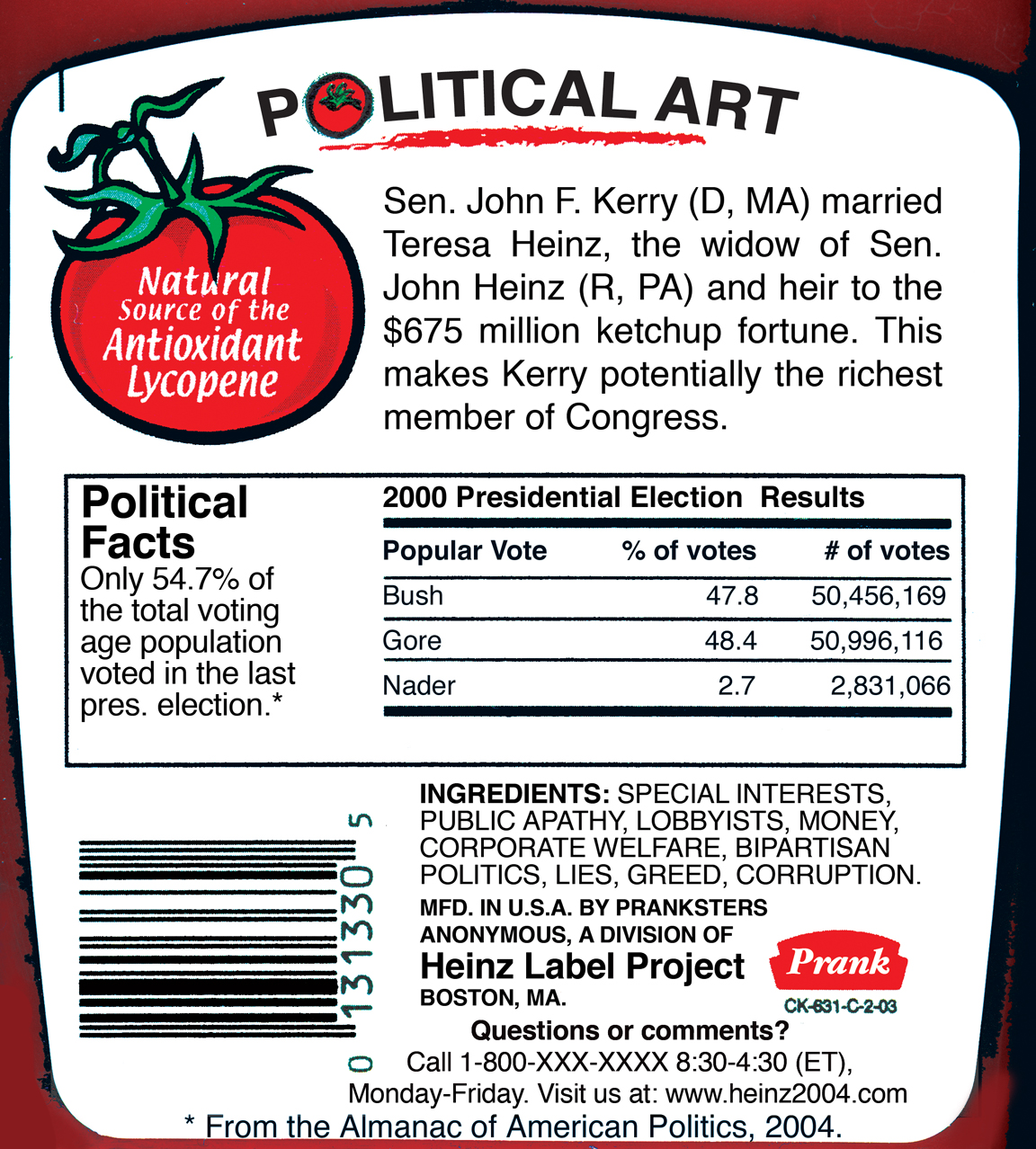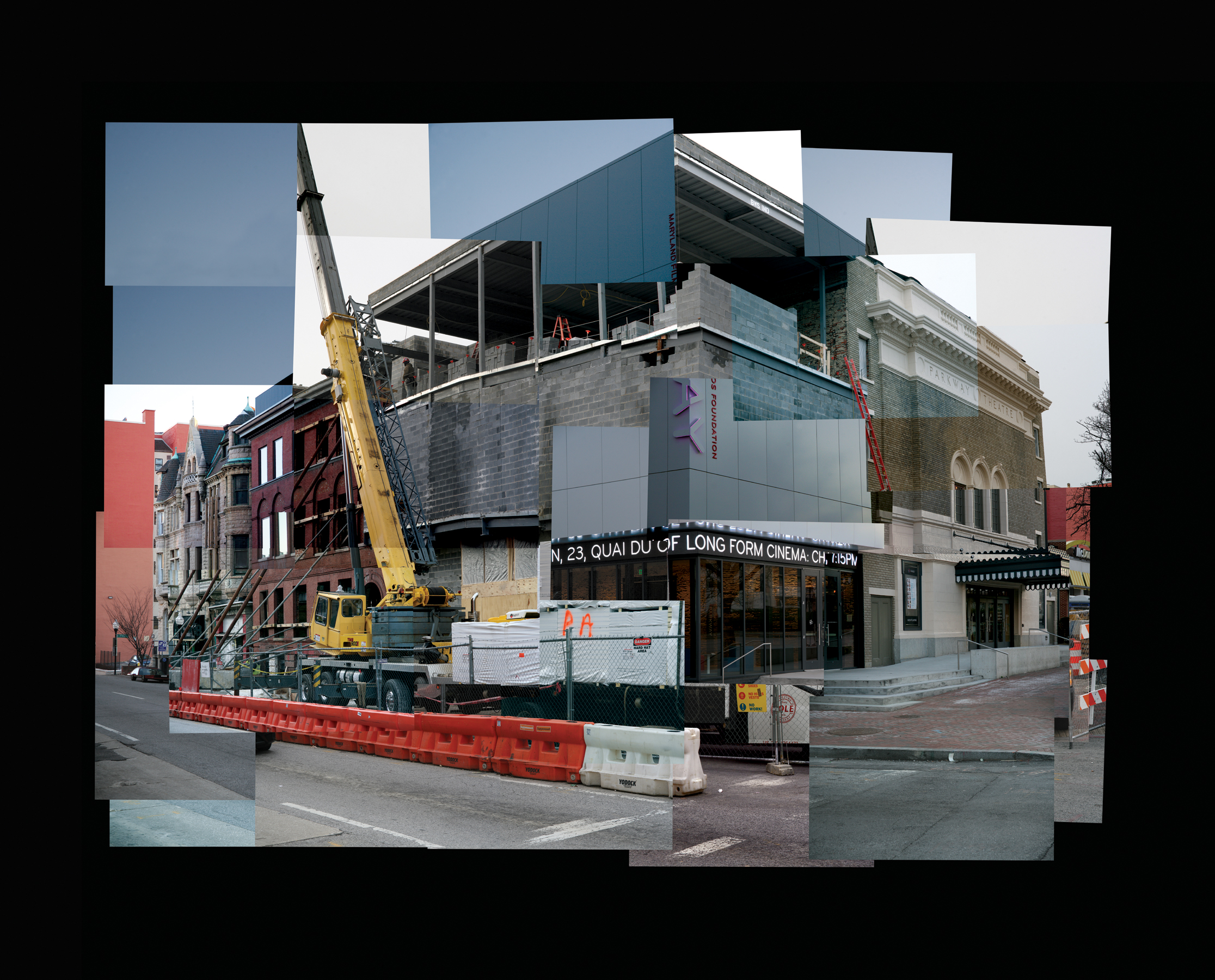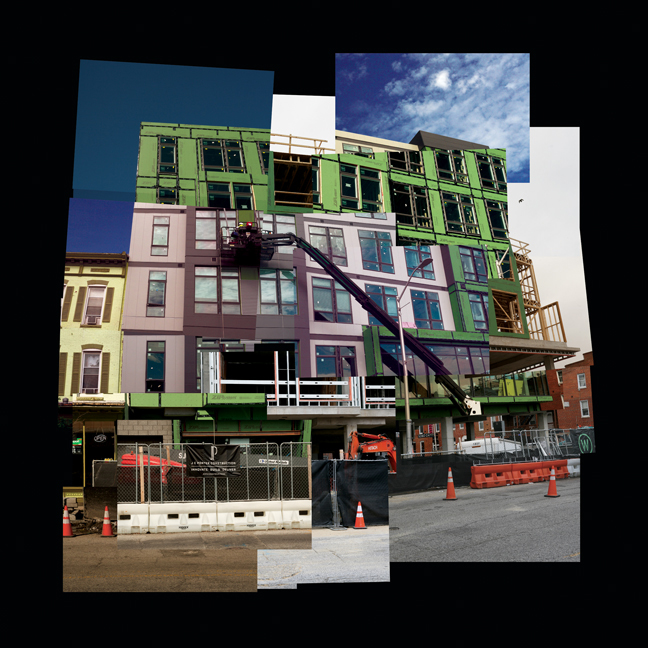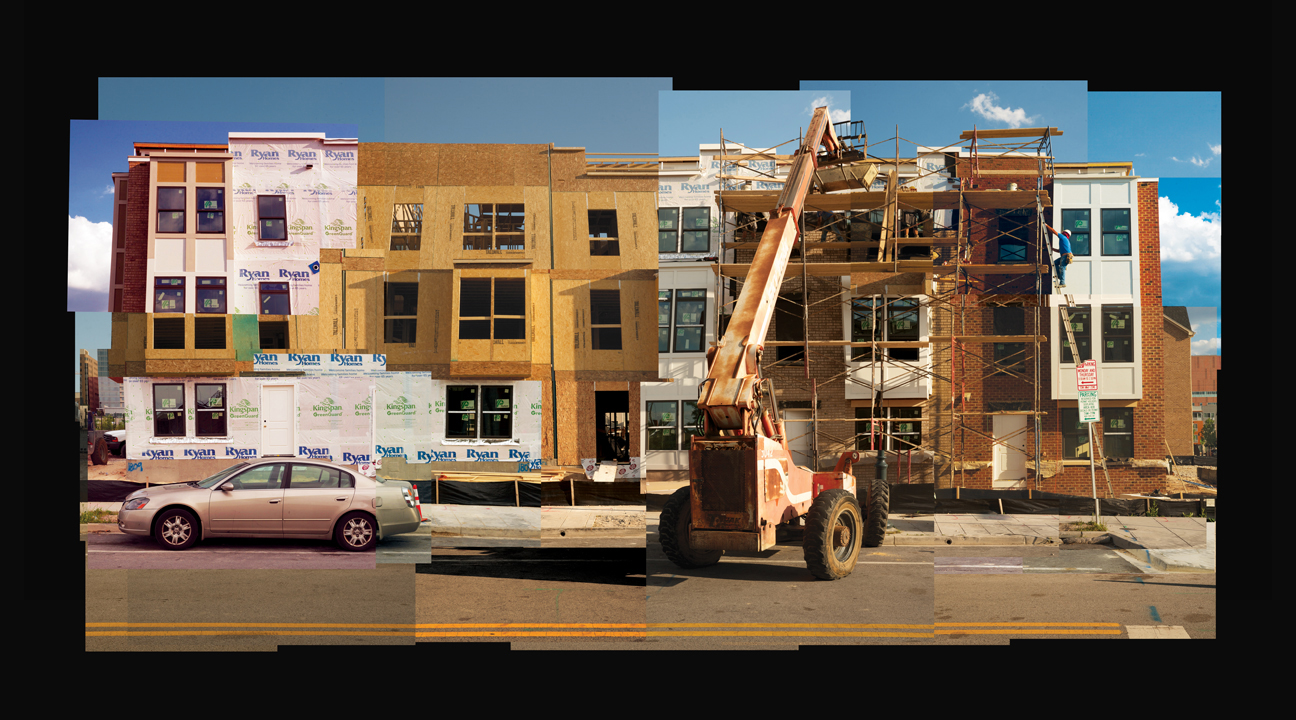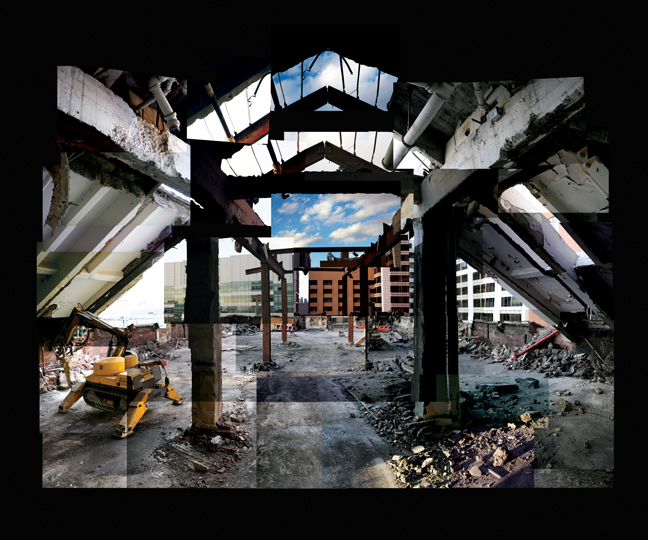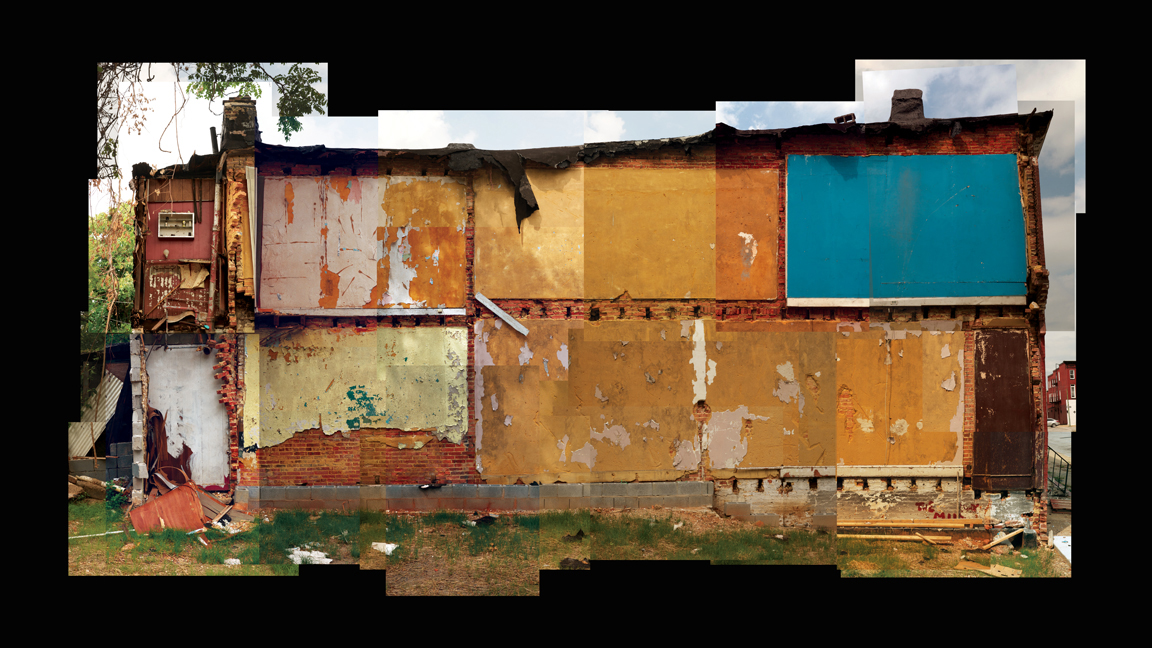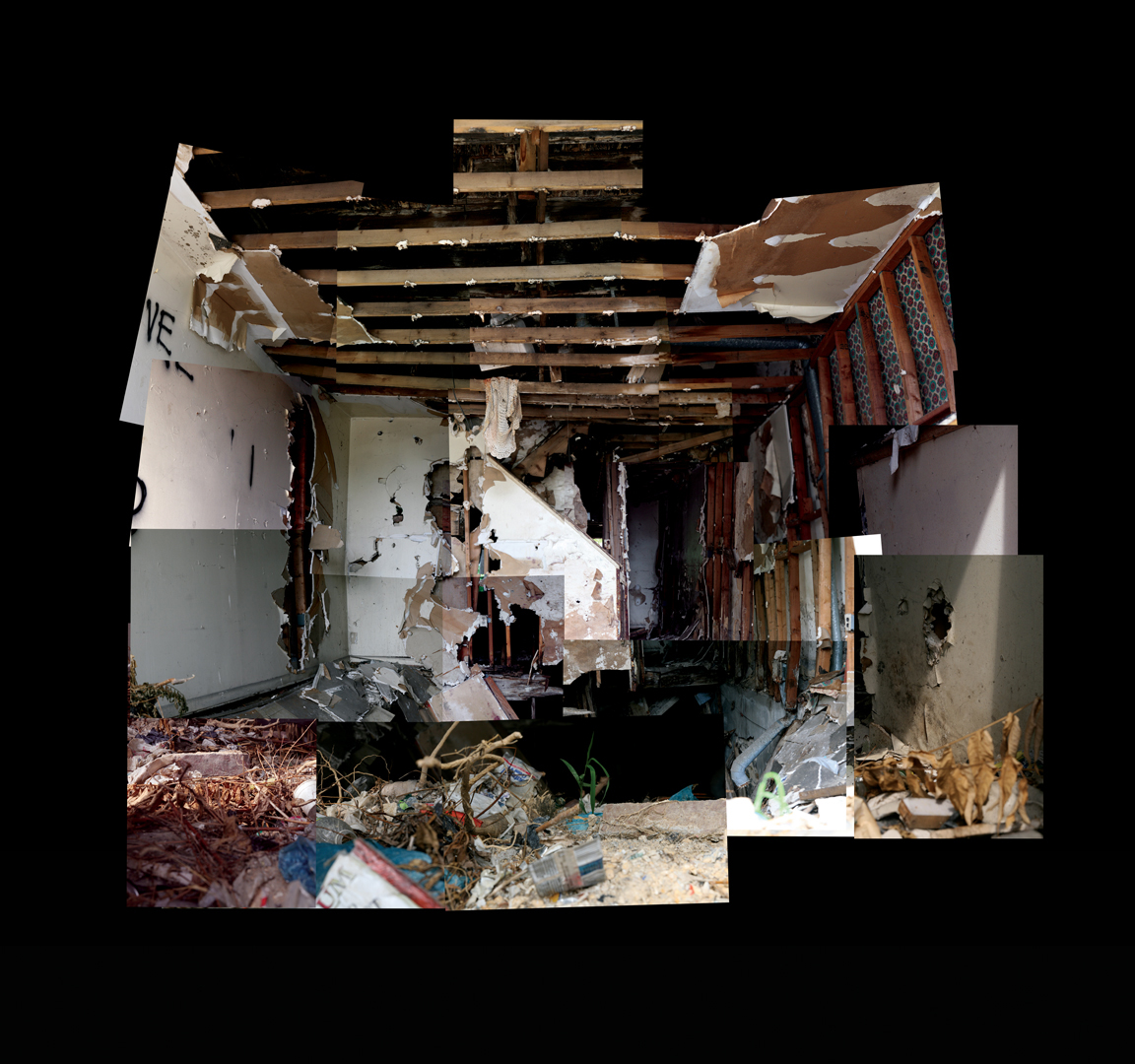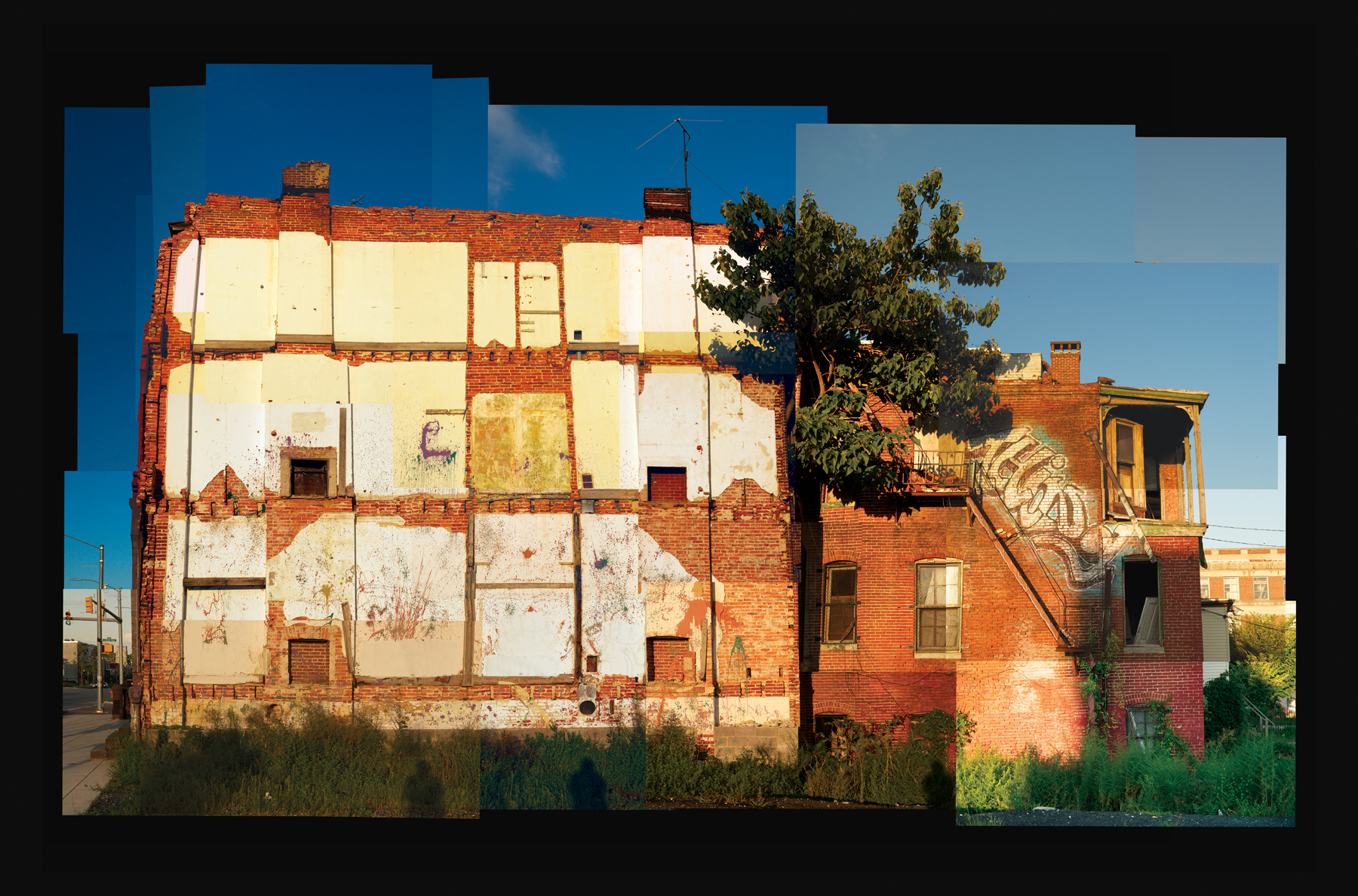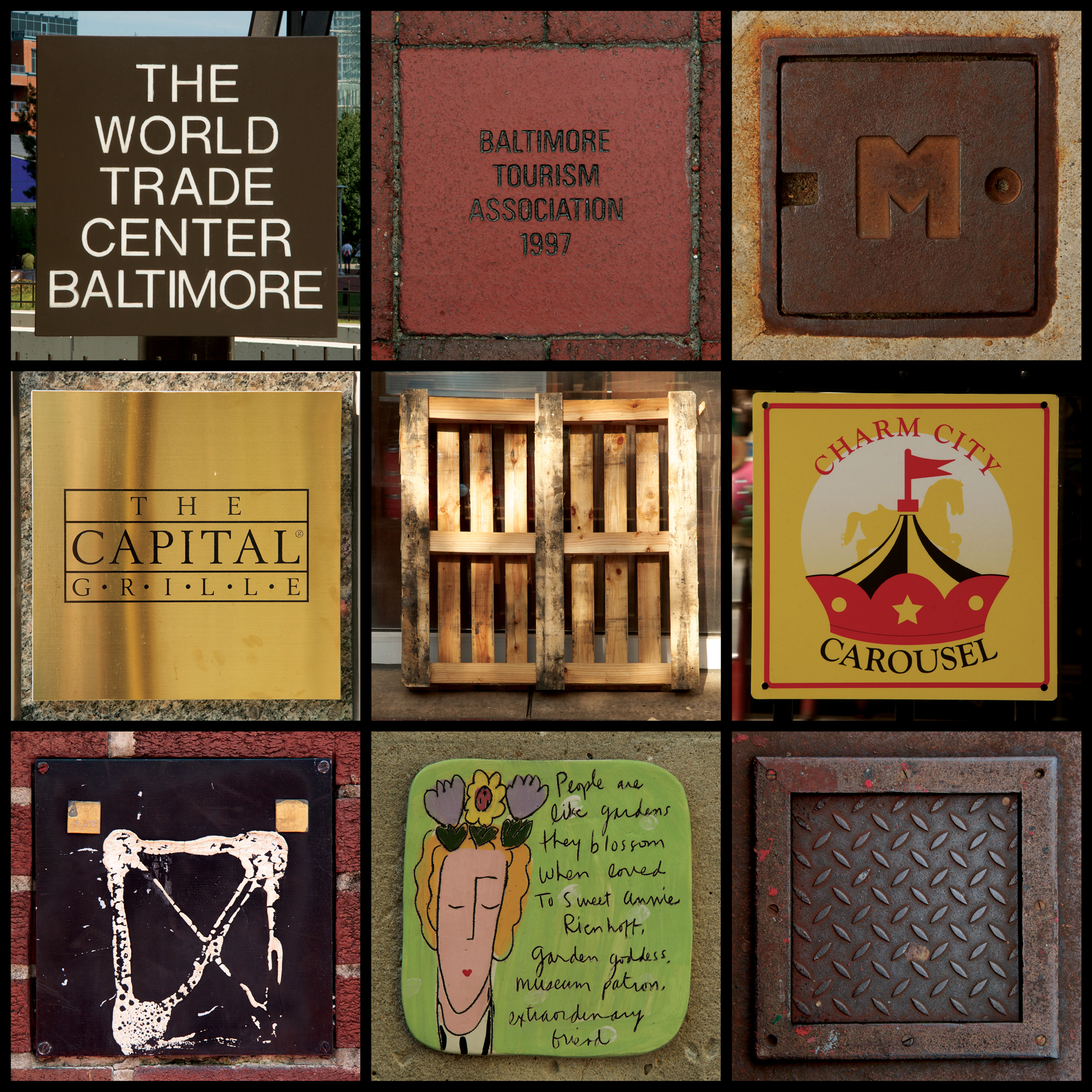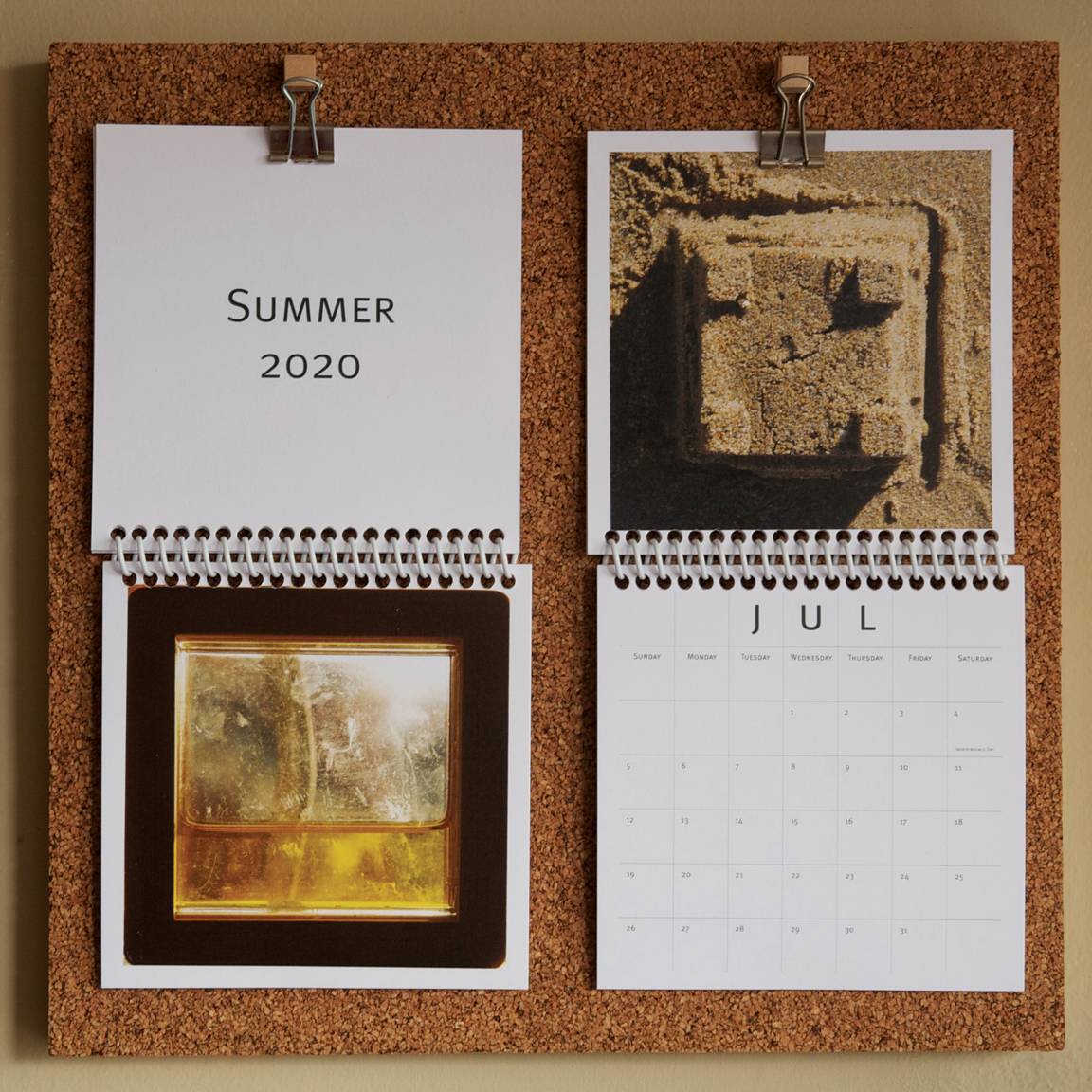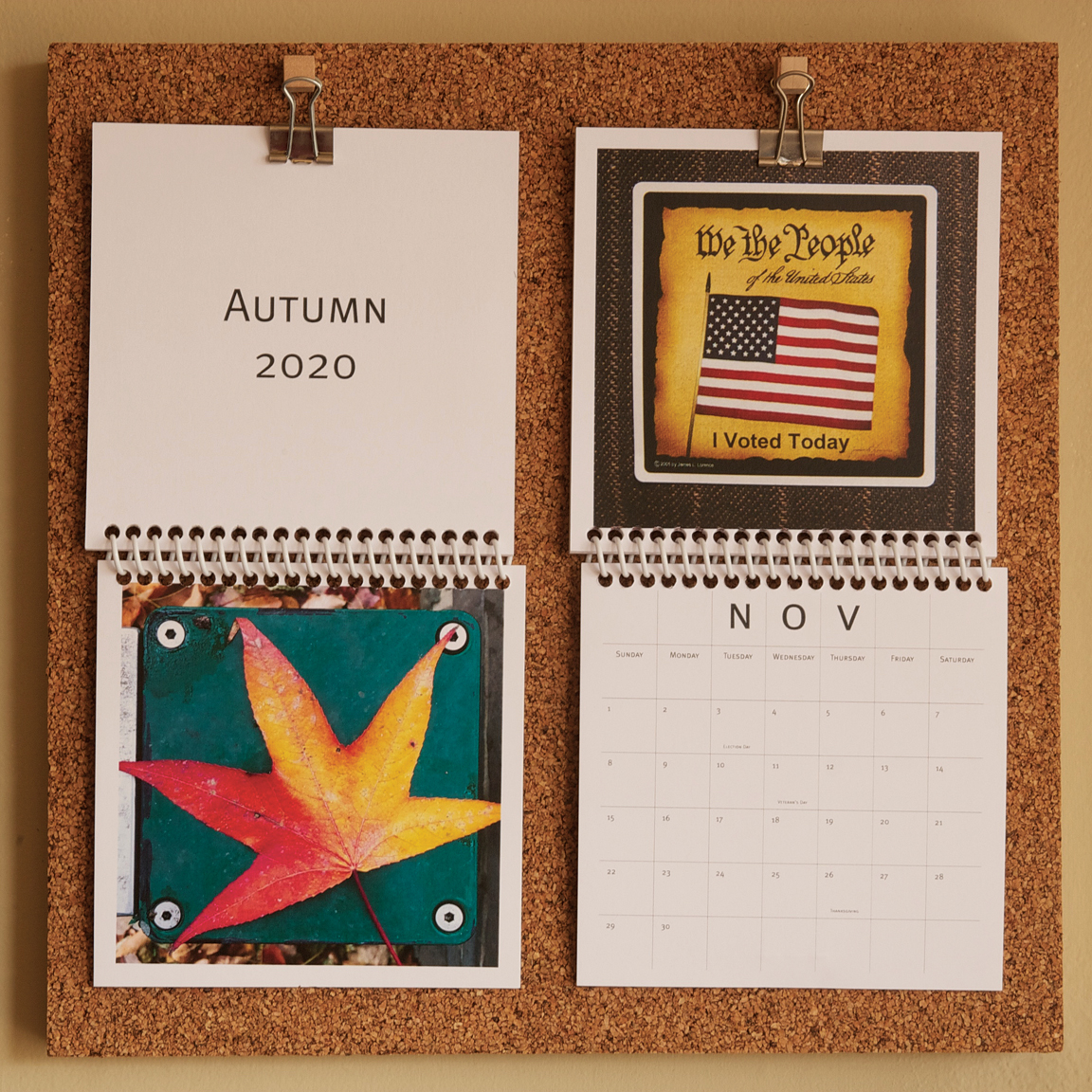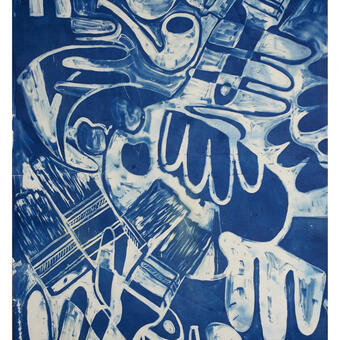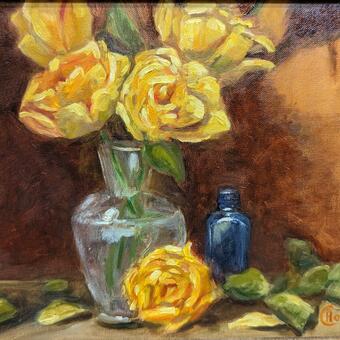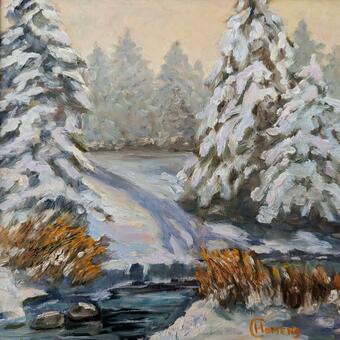Work samples
-
 JHU Medical Demolition #1 (2020)In early 2019, I was granted access to a demolition site on the Johns Hopkins medical campus. I was given a hardhat, neon vest, and protective glasses to wear while I photographed the floor-by-floor removal of a disused hospital building from the early twentieth century. It was like witnessing a surgical amputation of part of the built environment. From this first-hand look at a building’s methodical erasure, I got a glimpse into the intentional destruction of part of the city. The building is now completely gone; a square cavity in the ground is all that remains.
JHU Medical Demolition #1 (2020)In early 2019, I was granted access to a demolition site on the Johns Hopkins medical campus. I was given a hardhat, neon vest, and protective glasses to wear while I photographed the floor-by-floor removal of a disused hospital building from the early twentieth century. It was like witnessing a surgical amputation of part of the built environment. From this first-hand look at a building’s methodical erasure, I got a glimpse into the intentional destruction of part of the city. The building is now completely gone; a square cavity in the ground is all that remains.
About Dereck

Dereck Stafford Mangus is a visual artist and writer based in Baltimore, MD. His artwork has been exhibited in select galleries throughout Charm City, including Atlas Fine Arts, InSquare Art, Maryland Art Place, the Peale Center for Baltimore History & Architecture, and elsewhere. His visual work was featured in several group shows at Manifest Gallery in Cincinnati, OH, in 2021 and 2022, and is currently on view in an alumni exhibition at UMass Boston. … more
Published Essays and Reviews
Despite the challenges of the past few years, I was fortunate enough to get a lot of work done. Early in 2020, an essay of mine received Honorable Mention in the annual Art Writing challenge hosted by Artblog, an independent online arts journal based in Philadelphia. Artblog then invited me to become a contributing writer, focusing on the architecture and built environment of Baltimore, and several of my pieces were published on their site over the course of the year. More recently, I became a member of Atlantika, an international collective of artists, curators, and writers, who published several of my essays on their site as well.
Over the past few years, recognition for my writing has included selection for publication in Full Bleed, the annual journal of art and design at the Maryland Institute College of Art. In 2018, I won the prestigious Frieze Writer’s Prize for my review of a major exhibition celebrating Black artist Jack Whitten at The Baltimore Museum of Art. They too asked me to become a contributing writer. My inaugural review for frieze, “Artist Pat Steir Is Still Challenging the Postwar American Canon,” appeared online in January 2020, and in their March print edition.
-
On Dwelling, Anatomy, and Architecture during Coronavirus (2020)It is no surprise our dreams are full of constantly shifting, irrational spaces culled from memories of the various spaces we’ve inhabited. The spaces we’ve inhabited inhabit us. Those earliest of childhood experiences in our family homes shape our memories and dreams for years to come.
-
Charm City Double Feature: A Tale of Two Historic Theaters (2020)Though people don’t usually interact at the cinema, there is something almost civic or even religious about going to the movies. Like a town hall or a church service, moviegoers assemble and sit (mostly) in silence, observing a theme, together. In this sense, the movie theater represents a sort of non-denominational, secular church, where all are welcome. Watching movies on your computer or television is simply not the same experience as watching them – with a large audience in a darkened room – on the big screen.
-
At Home at The Baltimore Museum of Art: Mickalene Thomas' A Moment's Pleasure (2020)It’s a shame that the virus shut down the museum so soon after the opening of Thomas’ installation. After the abrupt closure, the title almost seemed like a bad joke. Then again, the coronavirus has added new meanings to the work when considering the full timescale of A Moment’s Pleasure , not just the space it fills. A complete timeline would begin in the late 1970s and early 1980s, when Thomas was growing up in Camden, New Jersey, a city not unlike Baltimore.
-
Legoland Brutalism and the Building Blocks of Urban Development (2020)Brutalism and Legos have a lot in common . They are both composite materials that are cast into repeatable forms or shapes for the purposes of constructing larger structures. Both have been around since the mid-20th century: Corbusier’s Unité d’habitation, the Ur-Brutalist building, was completed in France in 1952, a few years after Lego’s earliest version of interlocking bricks came out in 1949. And they’re both still here.
-
Searching for God at the PMA, but Finding Solace at the Barnes (2020)The added pressure of limited time can actually enhance a museum visit. Besides, you don’t want to spend too much time in a museum, lest you begin to suffer from “art fatigue.” Nonetheless, I wanted to be sure to see as much as possible, for I wasn’t sure how soon it would be before I would return to the Barnes. And though I had been told many times before about the many masterpieces housed there, nothing could have prepared me for what I was about to experience. After passing through the gorgeous modern lobby area, I climbed the stairs to the top floor and had what Ben Lerner refers to in his novel, Leaving the Atocha Station , as a “ profound experience of art .”
-
Artist Pat Steir Is Still Challenging the Postwar American Canon (2020)Discussing her ongoing ‘Waterfall’ paintings series, which she began in the late 1980s, Steir elaborated: ‘I stood on a ladder and made a wave gesture and threw the paint at the canvas. I never dripped paint. I poured or threw it. Dripping is not macho enough for me.’
-
Picabia’s Révérence (2019)At The Baltimore Museum of Art, in the Saidie A. May galleries, one can find Révérence (1915) by the Dada artist Francis Picabia. It's not an especially beautiful painting. The palette is rather drab, the execution somewhat crude. Yet it stands out just the same, perhaps because it is so odd.
-
Odyssey: Jack Whitten Sculpture, 1963–2017 (2018)We stand before a huge picture that suggests an aerial view of urban sprawl – yet this is no regular city. What we see here, from a bird’s-eye view, is a futuristic megalopolis, more organic than orthogonal. It resembles Wakanda’s Birnin Zana, the fictional African home of Marvel’s Black Panther .
-
Mark Bradford: Feel the Color (2018)Last summer, I fell in love with a work of art. Tucked away at the back of a gallery in the contemporary wing of the Baltimore Museum of Art hung one of the museum’s most recent acquisitions, My Grandmother Felt the Color . The large abstraction called to me, drawing me past other works of equal scale. It insisted that I look at it again and again.
2020: A Year in Review
-
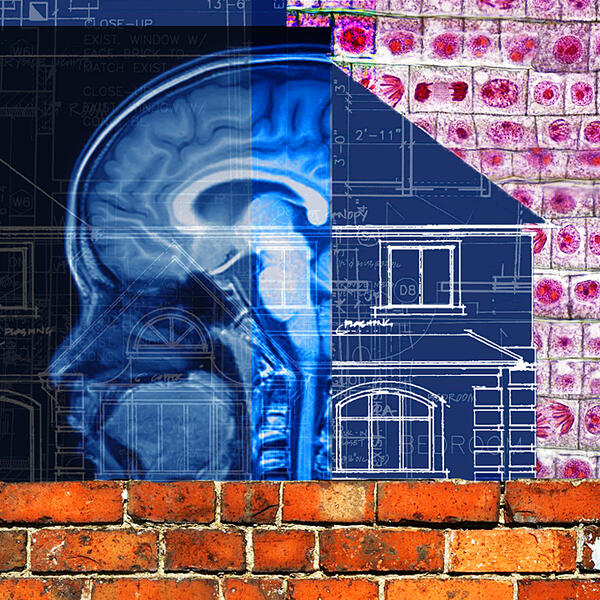 The Mindful Home (2020)I designed this digital illustration to accompany my essay, “On Dwelling: Anatomy and Architecture during Coronavirus,” which was published by Artblog, an independent online arts journal based in Philadelphia, in April 2020, and more recently by Atlantika, an international collective of artists, curators, and writers.
The Mindful Home (2020)I designed this digital illustration to accompany my essay, “On Dwelling: Anatomy and Architecture during Coronavirus,” which was published by Artblog, an independent online arts journal based in Philadelphia, in April 2020, and more recently by Atlantika, an international collective of artists, curators, and writers. -
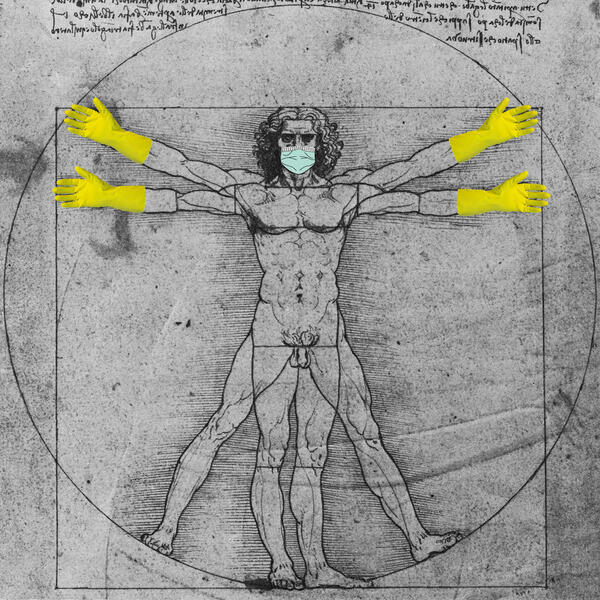 Vitruvian Man during Coronavirus (2020)I designed this digital illustration to accompany my essay, “On Dwelling: Anatomy and Architecture during Coronavirus,” which was published by Artblog, an independent online arts journal based in Philadelphia, in April 2020, and later by Atlantika, an international collective of artists, curators, and writers.
Vitruvian Man during Coronavirus (2020)I designed this digital illustration to accompany my essay, “On Dwelling: Anatomy and Architecture during Coronavirus,” which was published by Artblog, an independent online arts journal based in Philadelphia, in April 2020, and later by Atlantika, an international collective of artists, curators, and writers. -
 Home Is Where the Heart Is (2020)I designed this digital illustration to accompany my essay, “On Dwelling: Anatomy and Architecture during Coronavirus,” which was published by Artblog, an independent online arts journal based in Philadelphia, in April 2020, and later by Atlantika, an international collective of artists, curators, and writers.
Home Is Where the Heart Is (2020)I designed this digital illustration to accompany my essay, “On Dwelling: Anatomy and Architecture during Coronavirus,” which was published by Artblog, an independent online arts journal based in Philadelphia, in April 2020, and later by Atlantika, an international collective of artists, curators, and writers. -
 Exterior Shot: A Moment's Pleasure (2020)I took this digital photograph to accompany my essay, “At Home at the Baltimore Museum of Art: ‘Mickalene Thomas: A Moment’s Pleasure,’” which was published by Artblog, an independent online arts journal based in Philadelphia, in September 2020.
Exterior Shot: A Moment's Pleasure (2020)I took this digital photograph to accompany my essay, “At Home at the Baltimore Museum of Art: ‘Mickalene Thomas: A Moment’s Pleasure,’” which was published by Artblog, an independent online arts journal based in Philadelphia, in September 2020. -
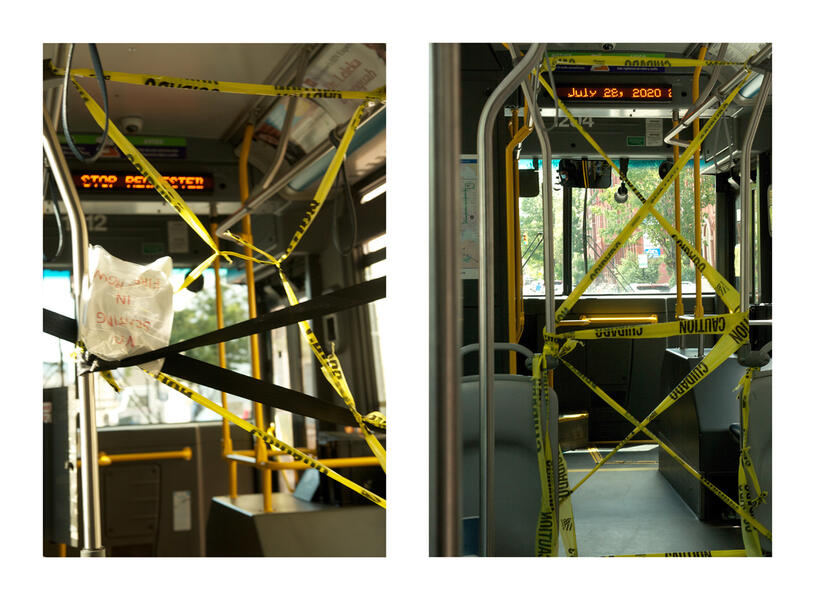 Bus Ride (2020)I submitted this digital diptych to the Penn Institute for Urban Research “Cities and Contagion” photo contest, and it was selected as a finalist.
Bus Ride (2020)I submitted this digital diptych to the Penn Institute for Urban Research “Cities and Contagion” photo contest, and it was selected as a finalist. -
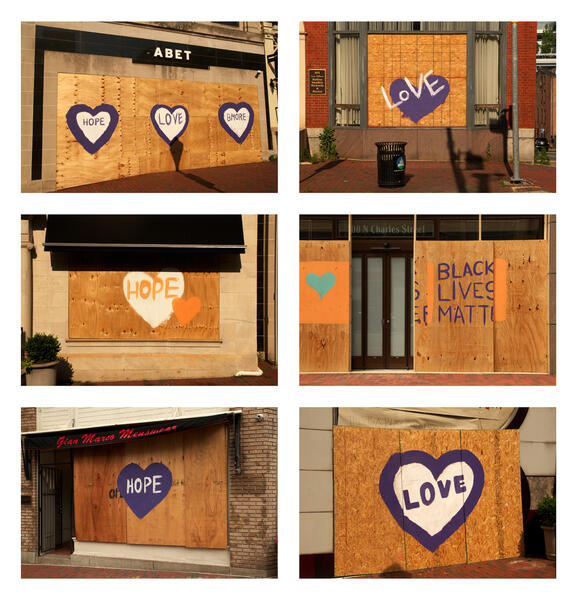 Shuttered Stores (2020)I submitted this composite image of six digital photographs to the Penn Institute for Urban Research “Cities and Contagion” photo contest. It depicts shuttered stores around Baltimore, painted over with signs of hope.
Shuttered Stores (2020)I submitted this composite image of six digital photographs to the Penn Institute for Urban Research “Cities and Contagion” photo contest. It depicts shuttered stores around Baltimore, painted over with signs of hope. -
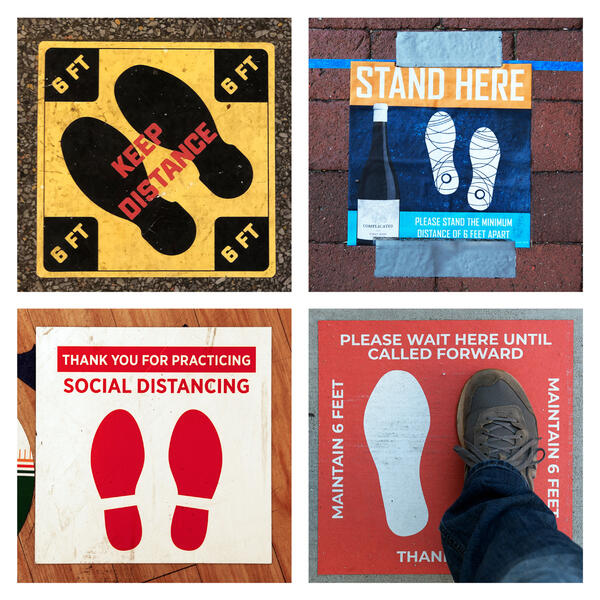 Square Signs #1I submitted this composite image of four digital photographs to the Penn Institute for Urban Research “Cities and Contagion” photo contest. Though it was not chosen as a winner or finalist for the contest, “Square Signs #1” was selected by the Hamilton Arts Collective to be included in their virtual exhibition “Bearing Witness – the artists’ tenacious view,” which will be on view from February 15–April 15, 2021.
Square Signs #1I submitted this composite image of four digital photographs to the Penn Institute for Urban Research “Cities and Contagion” photo contest. Though it was not chosen as a winner or finalist for the contest, “Square Signs #1” was selected by the Hamilton Arts Collective to be included in their virtual exhibition “Bearing Witness – the artists’ tenacious view,” which will be on view from February 15–April 15, 2021. -
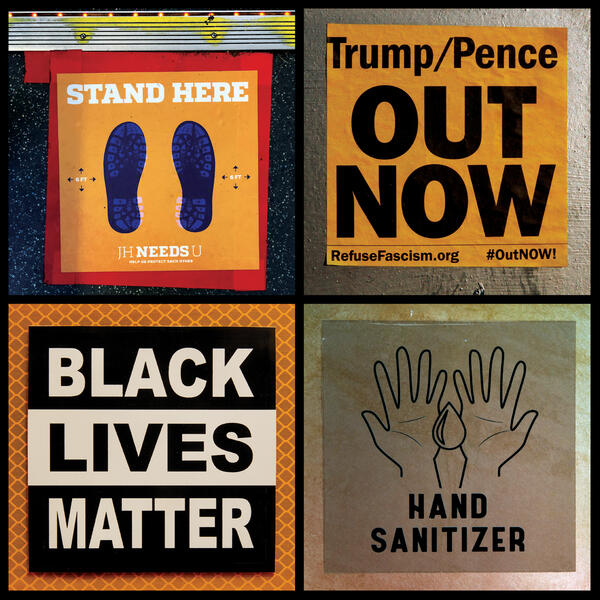 Square Signs #2 (2020)I recently made this composite image of four square signs I found around my neighborhood. It’s a companion piece to “Square Signs #1.”
Square Signs #2 (2020)I recently made this composite image of four square signs I found around my neighborhood. It’s a companion piece to “Square Signs #1.” -
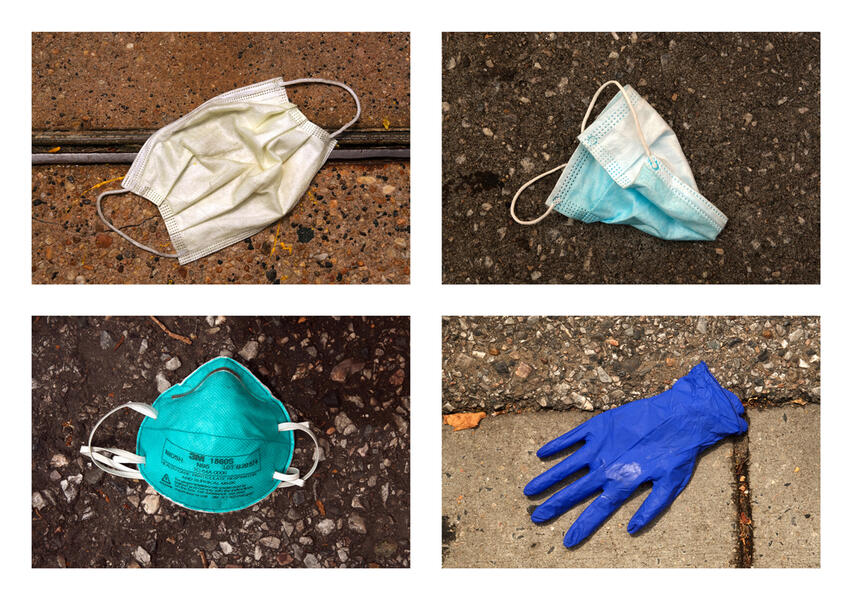 Street Finds (2020)I submitted this composite image of four digital photographs to the Penn Institute for Urban Research 2020 “Cities and Contagion” photo contest.
Street Finds (2020)I submitted this composite image of four digital photographs to the Penn Institute for Urban Research 2020 “Cities and Contagion” photo contest. -
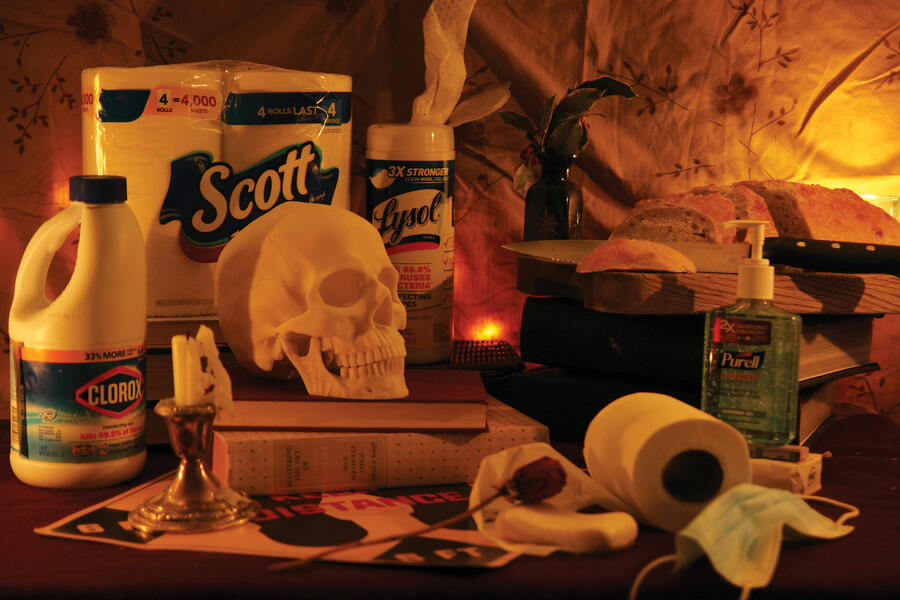 Still Life (2020)I shot “Still Life” with my digital SLR in the closing hours of 2020. It was inspired by the painting genre, and composed of a mixture of traditional and contemporary objects. “Still Life” was recently selected by the Hamilton Arts Collective to be included in their virtual exhibition “Bearing Witness – the artists’ tenacious view,” which will be on view from February 15–April 15, 2021.
Still Life (2020)I shot “Still Life” with my digital SLR in the closing hours of 2020. It was inspired by the painting genre, and composed of a mixture of traditional and contemporary objects. “Still Life” was recently selected by the Hamilton Arts Collective to be included in their virtual exhibition “Bearing Witness – the artists’ tenacious view,” which will be on view from February 15–April 15, 2021.
Political Art: 2004–2020
The Heinz Label Project, a similar “culture jamming” campaign, was completed during the 2004 Presidential Election, drew attention to the issue of money in mainstream politics. By highlighting the connection between Democratic nominee Senator John Kerry (D-MA) and his wife Teresa Heinz’ ketchup fortune, this tongue-in-cheek guerrilla art project playfully reminded the public of the massive fortunes necessary for mainstream political campaigns.
-
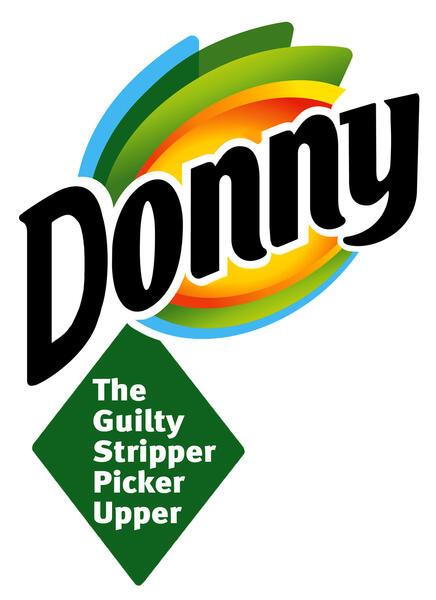 Bounty Label Project #1 (2020)I designed this label based on the original Bounty-brand paper towel logo, mass-produced it, and then distributed them amongst my politically like-minded friends to place over the actual logo in stores.
Bounty Label Project #1 (2020)I designed this label based on the original Bounty-brand paper towel logo, mass-produced it, and then distributed them amongst my politically like-minded friends to place over the actual logo in stores. -
 Bounty Label Project #2 (2020)I created this animated gif to illustrate how to place one of my “culture jamming” labels over the real Bounty logo in a store. (Click on it to view the animation.)
Bounty Label Project #2 (2020)I created this animated gif to illustrate how to place one of my “culture jamming” labels over the real Bounty logo in a store. (Click on it to view the animation.) -
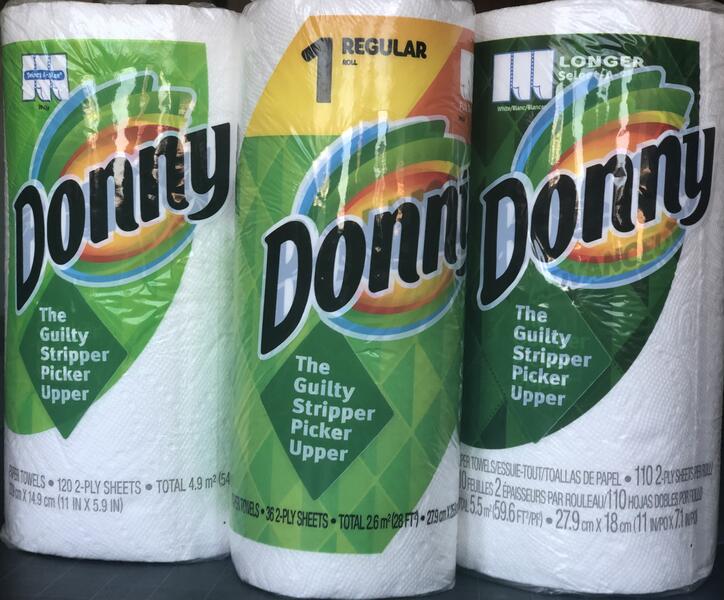 Bounty Label Project #3 (2020)This photograph serves as documentation of “Donny” labels on various-sized Bounty paper towel rolls.
Bounty Label Project #3 (2020)This photograph serves as documentation of “Donny” labels on various-sized Bounty paper towel rolls. -
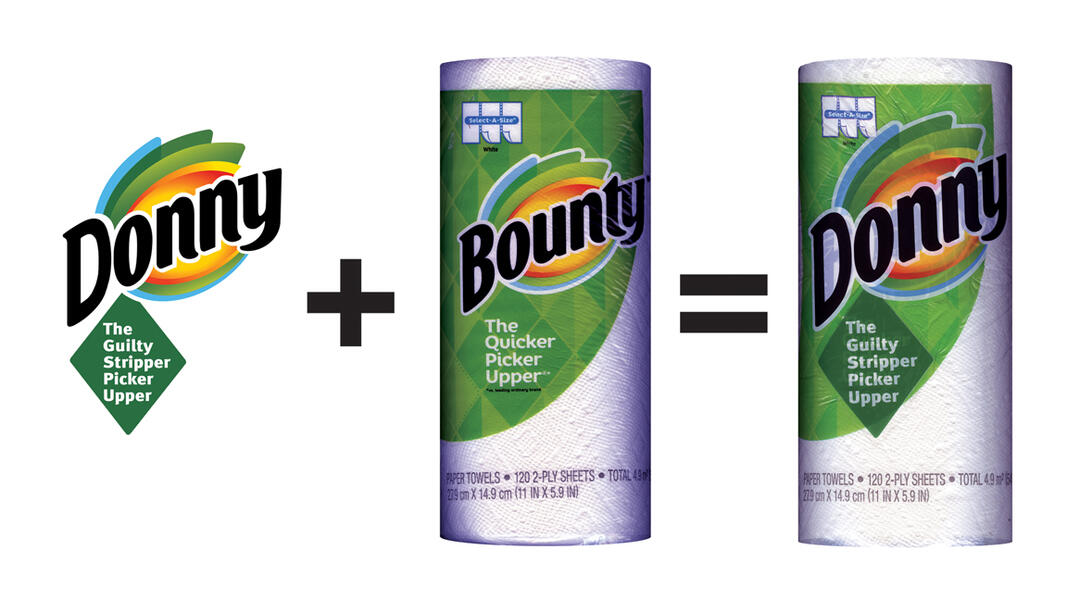 Bounty Label Project Poster (2020)I designed this poster to illustrate how to place one of my “culture jamming” labels over the real Bounty logo in mini marts and grocery stores.
Bounty Label Project Poster (2020)I designed this poster to illustrate how to place one of my “culture jamming” labels over the real Bounty logo in mini marts and grocery stores. -
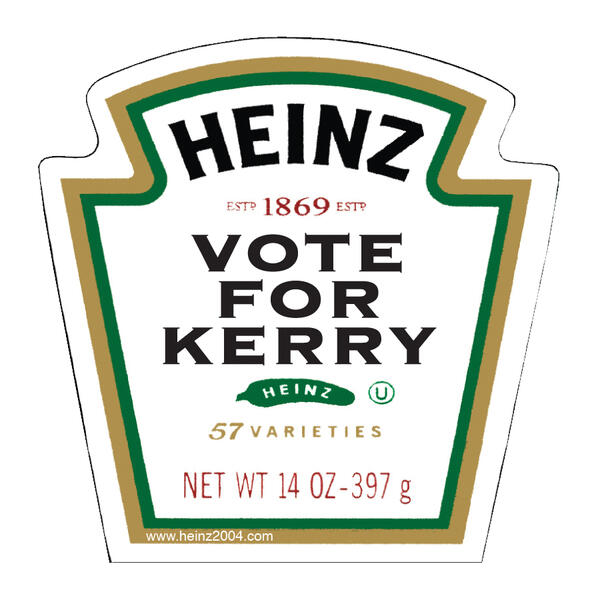 Heinz Label Project #1 (2004)I designed this label based on the original Heinz-brand ketchup logo, mass-produced it, and then distributed them amongst my politically like-minded friends to place over the actual logo in stores.
Heinz Label Project #1 (2004)I designed this label based on the original Heinz-brand ketchup logo, mass-produced it, and then distributed them amongst my politically like-minded friends to place over the actual logo in stores. -
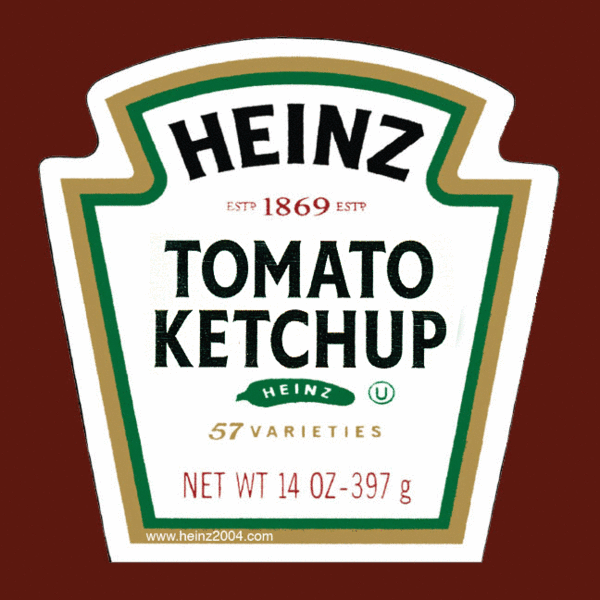 Heinz Label Project #2, (2004)I created this animated gif to illustrate how to place one of my “culture jamming” labels over the real Heinz logo in a store. (Click on it to view the animation.)
Heinz Label Project #2, (2004)I created this animated gif to illustrate how to place one of my “culture jamming” labels over the real Heinz logo in a store. (Click on it to view the animation.) -
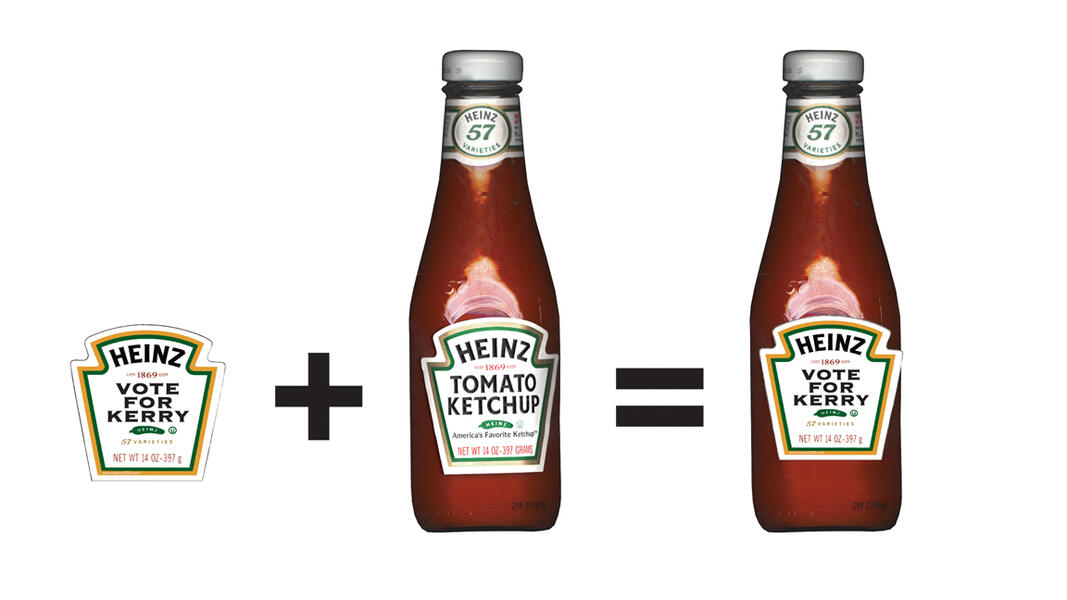 Heinz Label Project Poster (2004)I designed this poster to illustrate how to place one my political art labels over the real Heinz logo in restaurants and stores. Years after the 2004 Presidential Election, I was amused to find them still on bottles of ketchup at certain bars in Boston.
Heinz Label Project Poster (2004)I designed this poster to illustrate how to place one my political art labels over the real Heinz logo in restaurants and stores. Years after the 2004 Presidential Election, I was amused to find them still on bottles of ketchup at certain bars in Boston. -
 Heinz Label Project #3 (2004)I designed this label based on the original Heinz-brand ketchup ingredients sticker found on the back of the 36-oz “EZ-Squeeze” bottle to illustrate the outcome of the 2000 presidential election results.
Heinz Label Project #3 (2004)I designed this label based on the original Heinz-brand ketchup ingredients sticker found on the back of the 36-oz “EZ-Squeeze” bottle to illustrate the outcome of the 2000 presidential election results. -
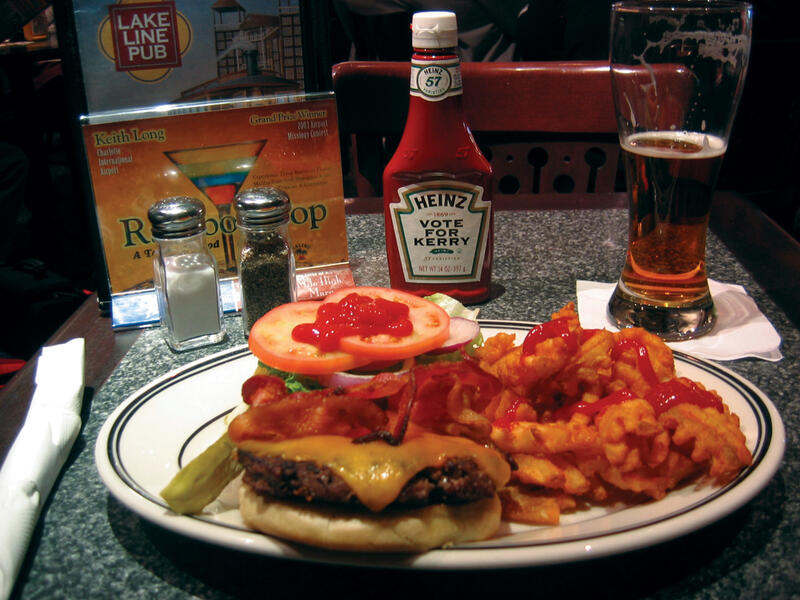 Heinz Label Project #4 (2004)I took this photo in an airport restaurant in Minneapolis, en route to Anchorage, in order to document my "culture jamming" political art project.
Heinz Label Project #4 (2004)I took this photo in an airport restaurant in Minneapolis, en route to Anchorage, in order to document my "culture jamming" political art project.
Constructions of Baltimore
-
 The Parkway Theater, Baltimore (2016–2017)This is a digital photomontage depicting the construction and renovation phases of the Parkway Theater in the Station North Arts District of Baltimore, MD.
The Parkway Theater, Baltimore (2016–2017)This is a digital photomontage depicting the construction and renovation phases of the Parkway Theater in the Station North Arts District of Baltimore, MD. -
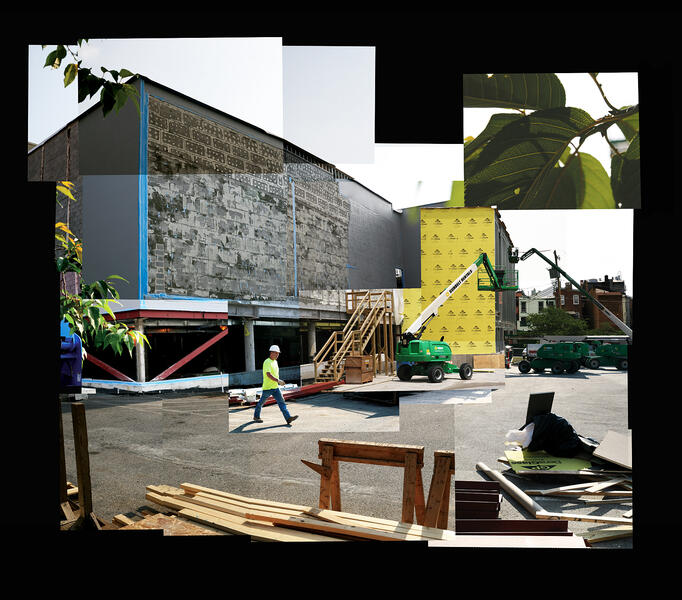 The Maryland Club, Baltimore (2018)This is a digital photomontage depicting the construction and renovation phases of the Maryland Club in the Mt. Vernon neighborhood of Baltimore, MD.
The Maryland Club, Baltimore (2018)This is a digital photomontage depicting the construction and renovation phases of the Maryland Club in the Mt. Vernon neighborhood of Baltimore, MD. -
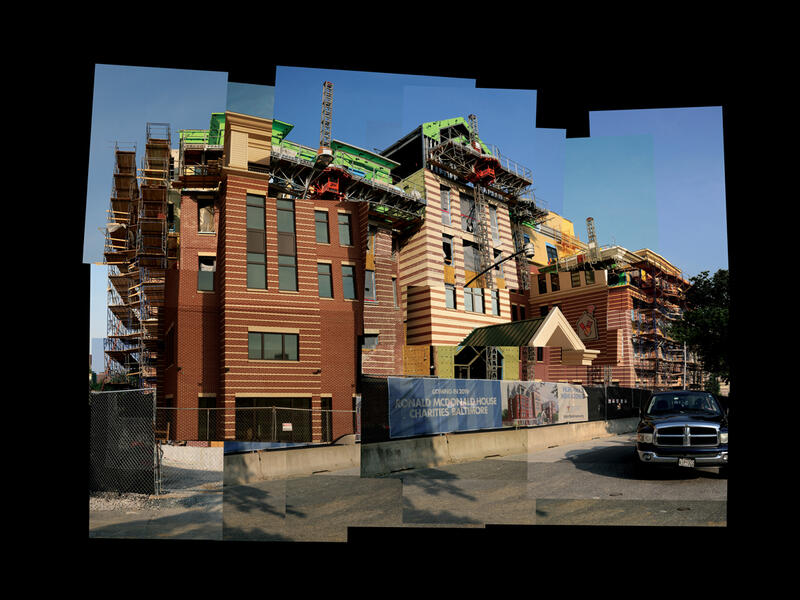 Ronald McDonald House, Baltimore (2018)This is a digital photomontage depicting the construction phases of the Ronald McDonald House in Baltimore, MD.
Ronald McDonald House, Baltimore (2018)This is a digital photomontage depicting the construction phases of the Ronald McDonald House in Baltimore, MD. -
 Nelson Kohl Apartments, Baltimore (2017–2018)This is a digital photomontage depicting the construction phases of a new residential building in Baltimore, MD.
Nelson Kohl Apartments, Baltimore (2017–2018)This is a digital photomontage depicting the construction phases of a new residential building in Baltimore, MD. -
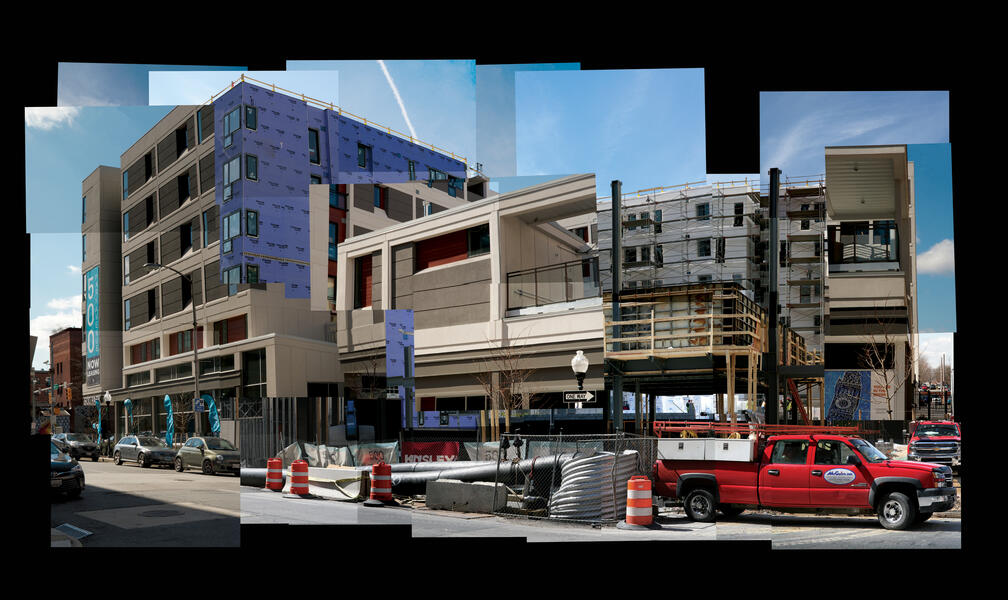 500 Park, Baltimore (2017–2018)This is a digital photomontage depicting the construction phases of a new residential building in Baltimore, MD.
500 Park, Baltimore (2017–2018)This is a digital photomontage depicting the construction phases of a new residential building in Baltimore, MD. -
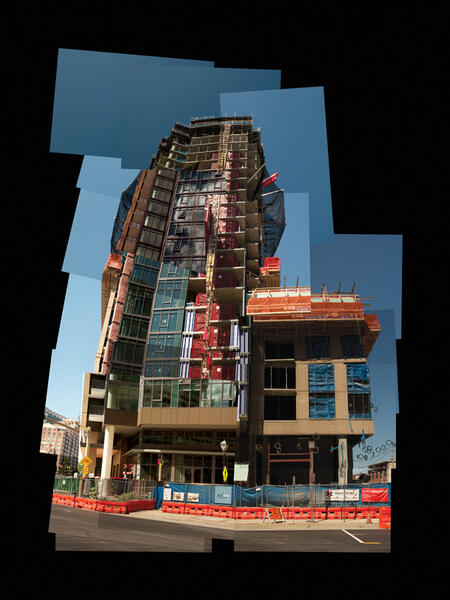 Avalon 555 President, Baltimore (2018–2019)This is a digital photomontage depicting the construction phases of a new high-rise residential building in the East Harbor neighborhood of Baltimore, MD.
Avalon 555 President, Baltimore (2018–2019)This is a digital photomontage depicting the construction phases of a new high-rise residential building in the East Harbor neighborhood of Baltimore, MD. -
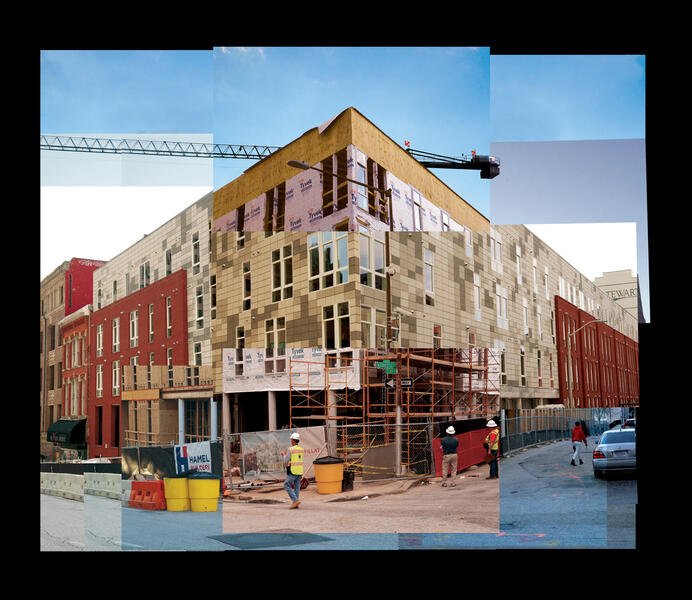 216 N. Liberty Street, Baltimore (2019)This is a digital photomontage depicting the construction phases of a new residential building in Baltimore, MD.
216 N. Liberty Street, Baltimore (2019)This is a digital photomontage depicting the construction phases of a new residential building in Baltimore, MD. -
 W. Cross Street, Baltimore (2019)This is a digital photomontage depicting the construction phases of a new residential building in the Federal Hill neighborhood of Baltimore, MD.
W. Cross Street, Baltimore (2019)This is a digital photomontage depicting the construction phases of a new residential building in the Federal Hill neighborhood of Baltimore, MD. -
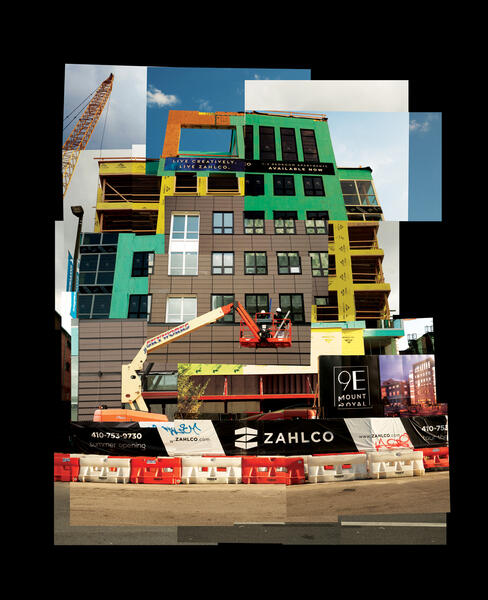 9 E. Mt. Royal Apartments (2019)This is a digital photomontage depicting the construction phases of a new residential building in the Station North Arts District of Baltimore, MD.
9 E. Mt. Royal Apartments (2019)This is a digital photomontage depicting the construction phases of a new residential building in the Station North Arts District of Baltimore, MD. -
 Eager Park Development, Baltimore (2020)This is a digital photomontage depicting the construction phases of the new Eager Park development in Baltimore, MD.
Eager Park Development, Baltimore (2020)This is a digital photomontage depicting the construction phases of the new Eager Park development in Baltimore, MD.
Ruins of Baltimore: Part One
-
 JHU Medical Demolition #1 (2020)This is a digital photomontage and mixed-media assemblage depicting a demolition site I was granted access to on the Johns Hopkins medical campus in East Baltimore.
JHU Medical Demolition #1 (2020)This is a digital photomontage and mixed-media assemblage depicting a demolition site I was granted access to on the Johns Hopkins medical campus in East Baltimore. -
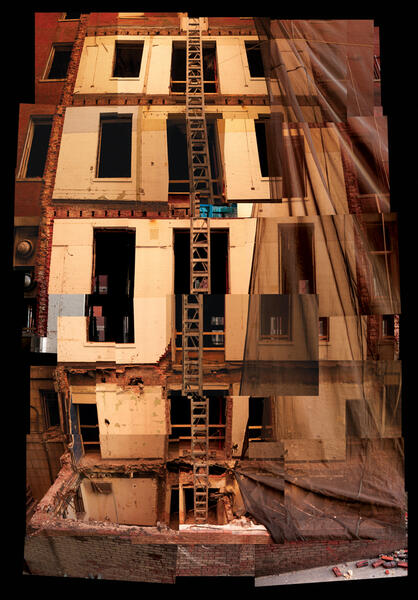 JHU Medical Demolition #2 (2019)This is a digital photomontage depicting a demolition site I was granted access to on the Johns Hopkins medical campus in East Baltimore.
JHU Medical Demolition #2 (2019)This is a digital photomontage depicting a demolition site I was granted access to on the Johns Hopkins medical campus in East Baltimore. -
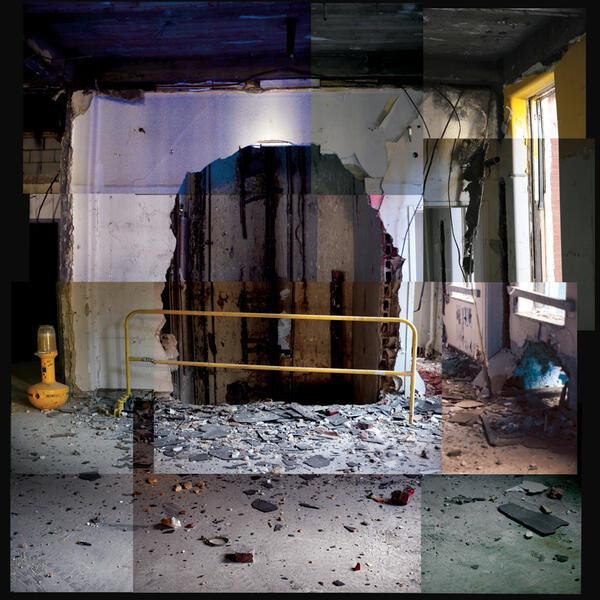 JHU Medical Demolition #3 (2019)This is a digital photomontage depicting a demolition site I was granted access to on the Johns Hopkins medical campus in East Baltimore.
JHU Medical Demolition #3 (2019)This is a digital photomontage depicting a demolition site I was granted access to on the Johns Hopkins medical campus in East Baltimore. -
 JHU Medical Demolition #4 (2019)This is a digital photomontage depicting a demolition site I was granted access to on the Johns Hopkins medical campus in East Baltimore.
JHU Medical Demolition #4 (2019)This is a digital photomontage depicting a demolition site I was granted access to on the Johns Hopkins medical campus in East Baltimore. -
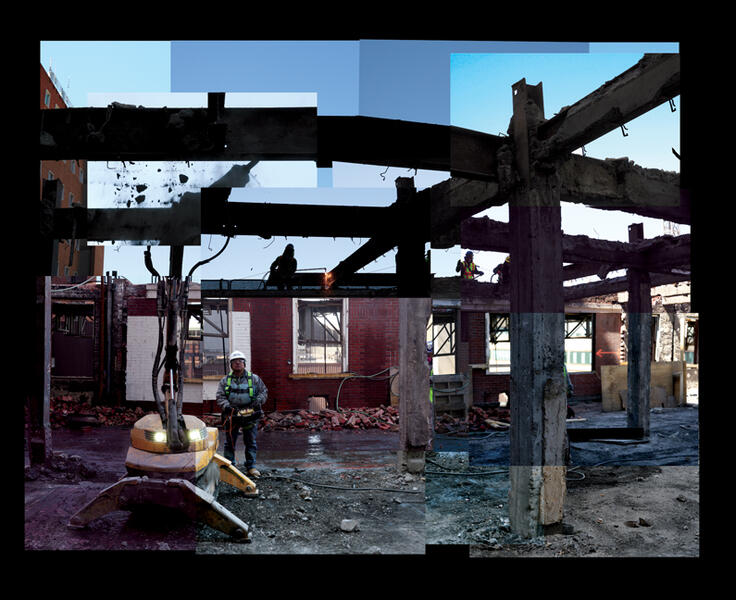 JHU Medical Demolition #5 (2019)This is a digital photomontage depicting a demolition site I was granted access to on the Johns Hopkins medical campus in East Baltimore.
JHU Medical Demolition #5 (2019)This is a digital photomontage depicting a demolition site I was granted access to on the Johns Hopkins medical campus in East Baltimore. -
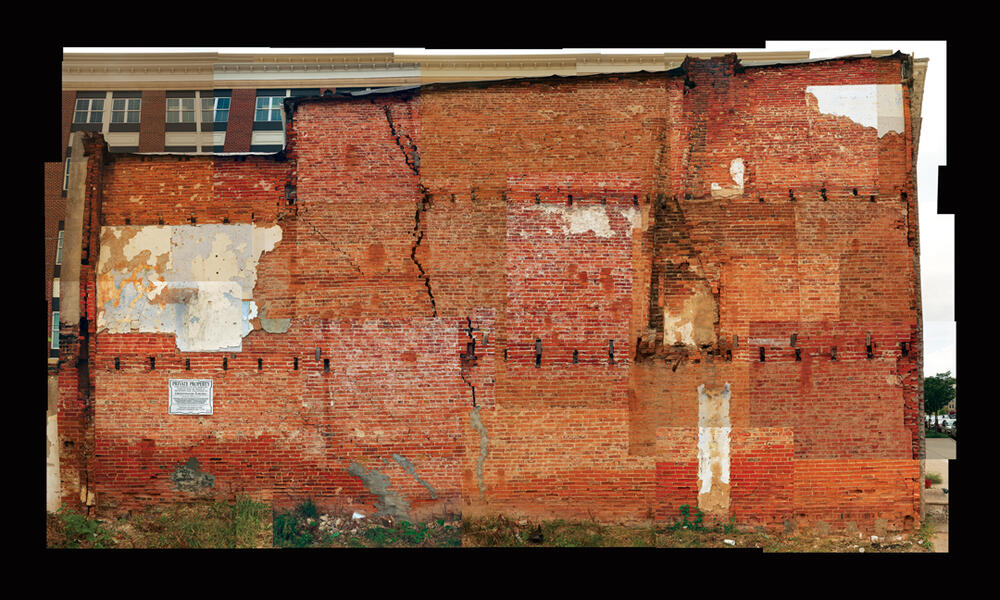 Hopkins Medical Area Ruin #1 (2019)This is a digital photomontage depicting a modern ruin I found while exploring East Baltimore.
Hopkins Medical Area Ruin #1 (2019)This is a digital photomontage depicting a modern ruin I found while exploring East Baltimore. -
 1100 E. Baltimore Street (2020)This is a digital photomontage depicting a modern ruin I found while exploring East Baltimore.
1100 E. Baltimore Street (2020)This is a digital photomontage depicting a modern ruin I found while exploring East Baltimore. -
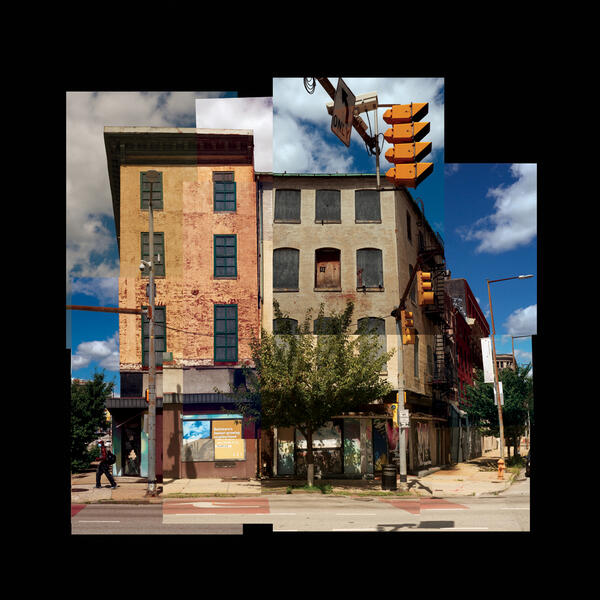 Downtown Ruin, Baltimore (2020)This is a digital photomontage depicting a modern ruin I found while exploring downtown Baltimore.
Downtown Ruin, Baltimore (2020)This is a digital photomontage depicting a modern ruin I found while exploring downtown Baltimore. -
 The Mayfair Theater (2020)This is a digital photomontage depicting the abandoned Mayfair Theater in Baltimore.
The Mayfair Theater (2020)This is a digital photomontage depicting the abandoned Mayfair Theater in Baltimore. -
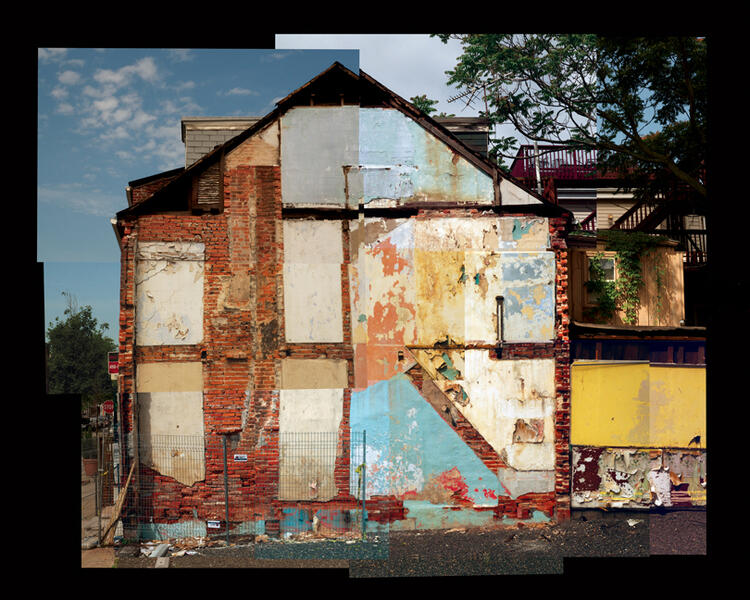 Federal Hill Ruin (2019)This is a digital photomontage depicting a modern ruin I found while exploring the Federal Hill neighborhood of Baltimore.
Federal Hill Ruin (2019)This is a digital photomontage depicting a modern ruin I found while exploring the Federal Hill neighborhood of Baltimore.
Ruins of Baltimore: Part Two
-
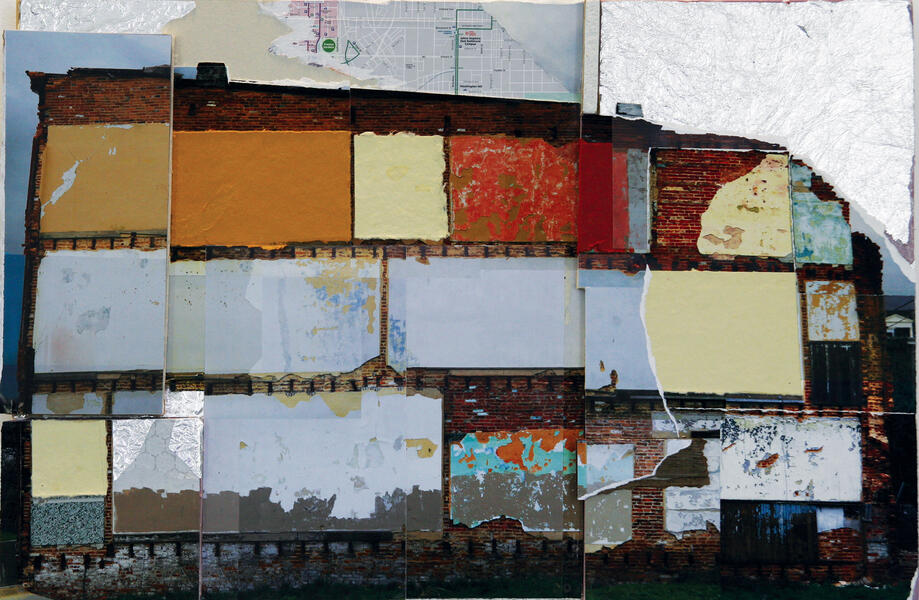 Johnston Square Ruin #1 (2015–2020)This is a digital photomontage and mixed-media assemblage depicting a modern ruin I found while exploring the Johnston Square neighborhood of East Baltimore.
Johnston Square Ruin #1 (2015–2020)This is a digital photomontage and mixed-media assemblage depicting a modern ruin I found while exploring the Johnston Square neighborhood of East Baltimore. -
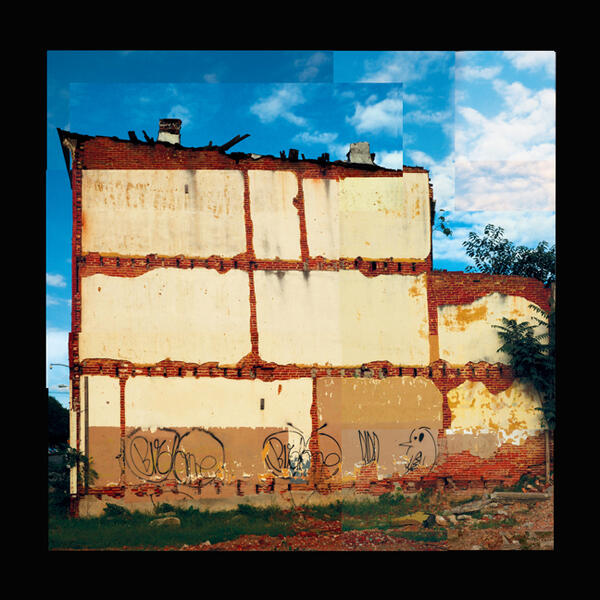 Johnston Square Ruin #2 (2019)This is a digital photomontage depicting a modern ruin I found while exploring the Johnston Square neighborhood of East Baltimore.
Johnston Square Ruin #2 (2019)This is a digital photomontage depicting a modern ruin I found while exploring the Johnston Square neighborhood of East Baltimore. -
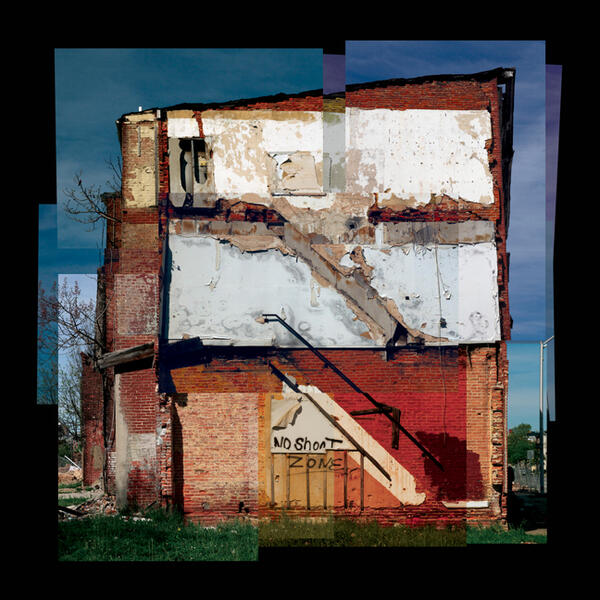 Johnston Square Ruin #3 (2019)This is a digital photomontage depicting a modern ruin I found while exploring the Johnston Square neighborhood of East Baltimore.
Johnston Square Ruin #3 (2019)This is a digital photomontage depicting a modern ruin I found while exploring the Johnston Square neighborhood of East Baltimore. -
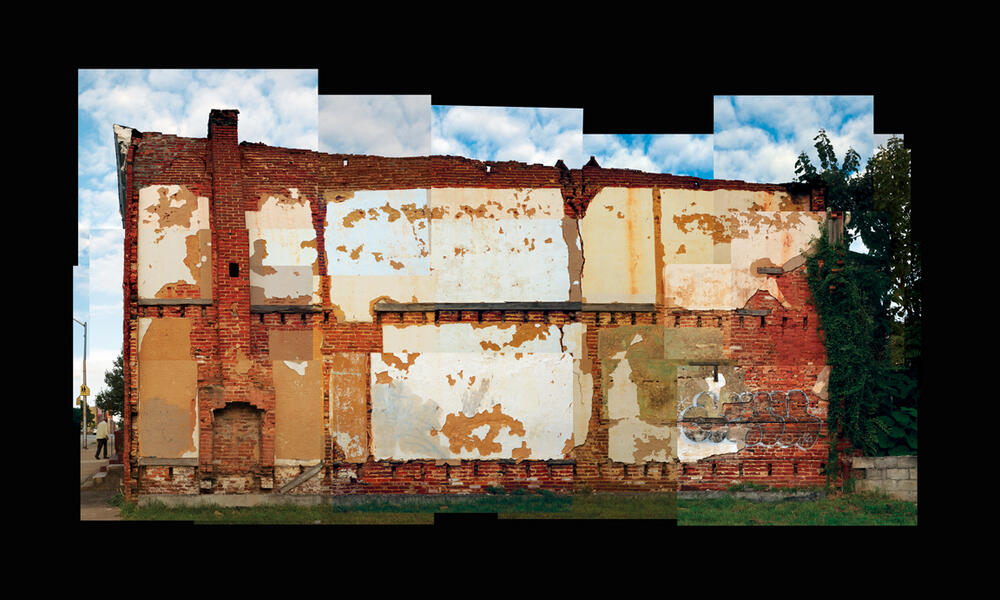 Johnston Square Ruin #4 (2019)This is a digital photomontage depicting a modern ruin I found while exploring the Johnston Square neighborhood of East Baltimore.
Johnston Square Ruin #4 (2019)This is a digital photomontage depicting a modern ruin I found while exploring the Johnston Square neighborhood of East Baltimore. -
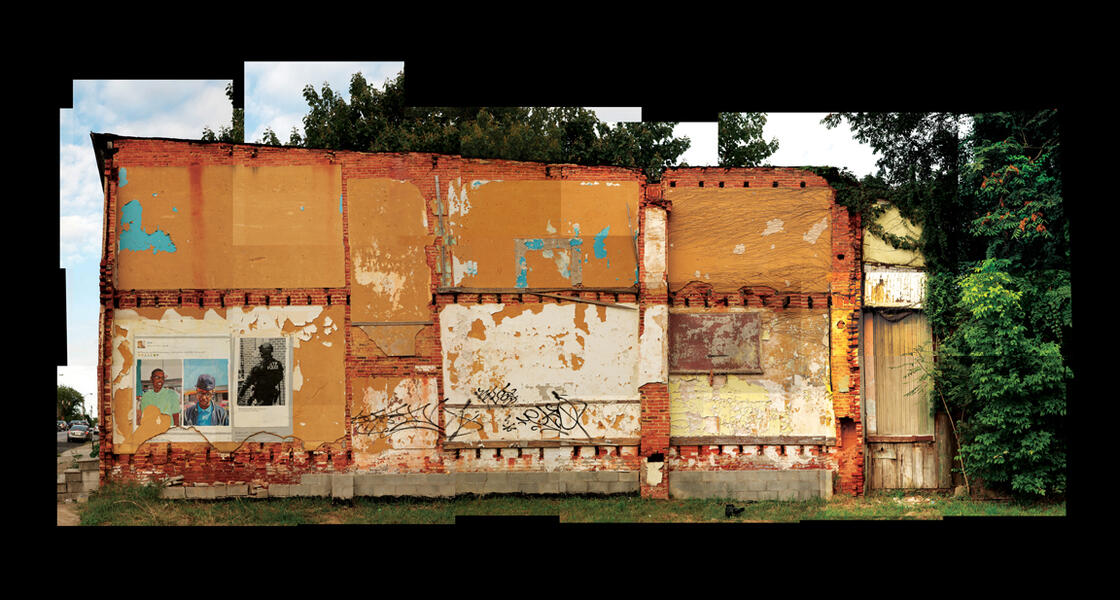 Johnston Square Ruin #5 (2019)This is a digital photomontage depicting a modern ruin I found while exploring the Johnston Square neighborhood of East Baltimore.
Johnston Square Ruin #5 (2019)This is a digital photomontage depicting a modern ruin I found while exploring the Johnston Square neighborhood of East Baltimore. -
 Johnston Square Ruin #6 (2019)This is a digital photomontage depicting a modern ruin I found while exploring the Johnston Square neighborhood of East Baltimore.
Johnston Square Ruin #6 (2019)This is a digital photomontage depicting a modern ruin I found while exploring the Johnston Square neighborhood of East Baltimore. -
 Johnston Square Ruin #7 (2019)This is a digital photomontage depicting the interior of a modern ruin I found while exploring the Johnston Square neighborhood of East Baltimore.
Johnston Square Ruin #7 (2019)This is a digital photomontage depicting the interior of a modern ruin I found while exploring the Johnston Square neighborhood of East Baltimore. -
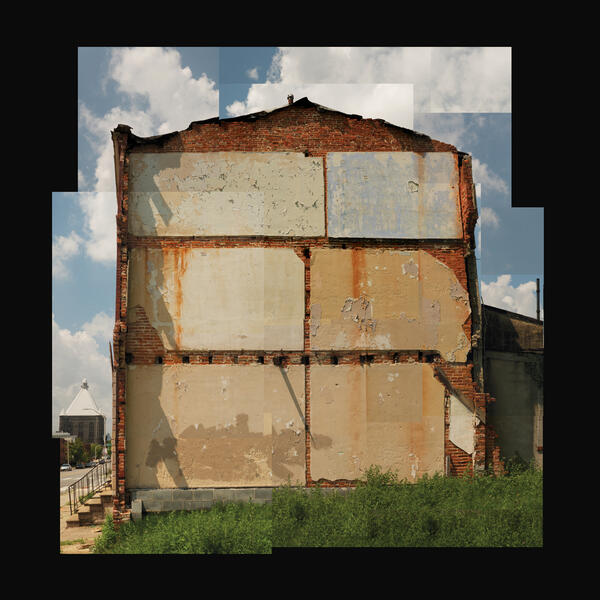 Johnston Square Ruin #8 (2020)This is a digital photomontage depicting a modern ruin I found while exploring the Johnston Square neighborhood of East Baltimore.
Johnston Square Ruin #8 (2020)This is a digital photomontage depicting a modern ruin I found while exploring the Johnston Square neighborhood of East Baltimore. -
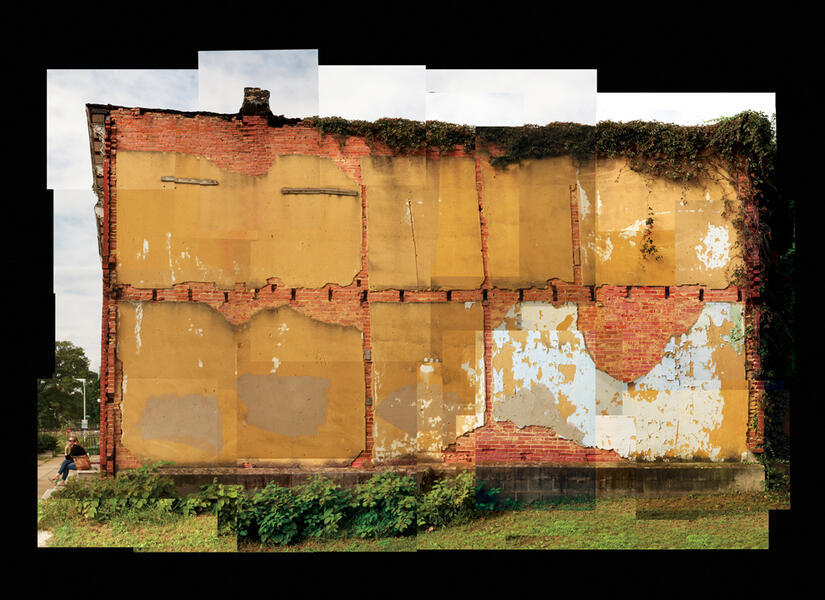 Johnston Square Ruin #9 (2020)This is a digital photomontage depicting a modern ruin I found while exploring the Johnston Square neighborhood of East Baltimore.
Johnston Square Ruin #9 (2020)This is a digital photomontage depicting a modern ruin I found while exploring the Johnston Square neighborhood of East Baltimore. -
 Oliver Ruin #1 (2020)This is a digital photomontage depicting a modern ruin I found while exploring the Johnston Square neighborhood of East Baltimore.
Oliver Ruin #1 (2020)This is a digital photomontage depicting a modern ruin I found while exploring the Johnston Square neighborhood of East Baltimore.
The Square Project: Part One
The Square Project began in 2001, a few months before 9/11, during a transatlantic postal art exchange between Jenni and me while she was studying design in London and I was in a photography course at UMass Boston. I was trying to figure out what I should shoot for a final project around the time we began playing around with – for whatever reason – the multiple meanings of the word square in our mailings, combining both its formal properties as a design element with its slang use as a hipper-than-thou affront: “You are so square!”
-
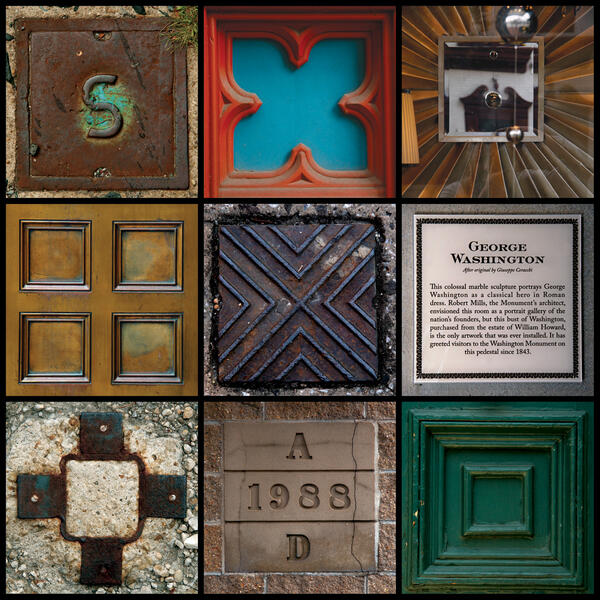 Mt.Vernon, Baltimore (2015)This is a 3 x 3 grid of nine square items I found while exploring the Mt. Vernon neighborhood of Baltimore, MD.
Mt.Vernon, Baltimore (2015)This is a 3 x 3 grid of nine square items I found while exploring the Mt. Vernon neighborhood of Baltimore, MD. -
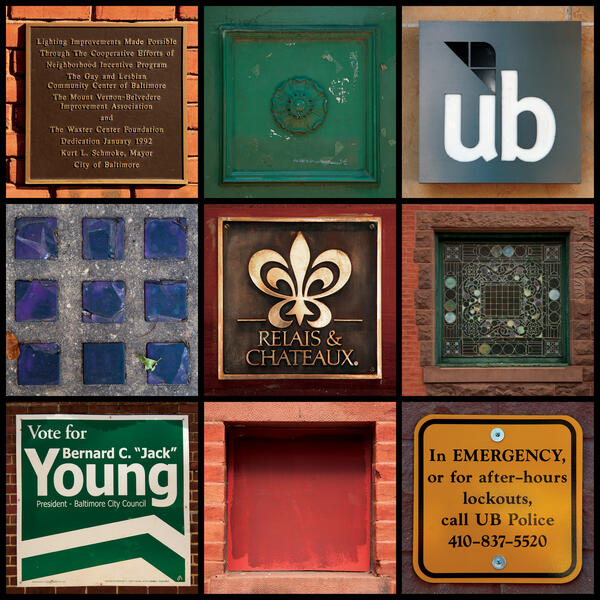 MId-Town Belvedere, Baltimore (2016)This is a 3 x 3 grid of nine square items I found while exploring the MId-Town Belvedere neighborhood of Baltimore, MD.
MId-Town Belvedere, Baltimore (2016)This is a 3 x 3 grid of nine square items I found while exploring the MId-Town Belvedere neighborhood of Baltimore, MD. -
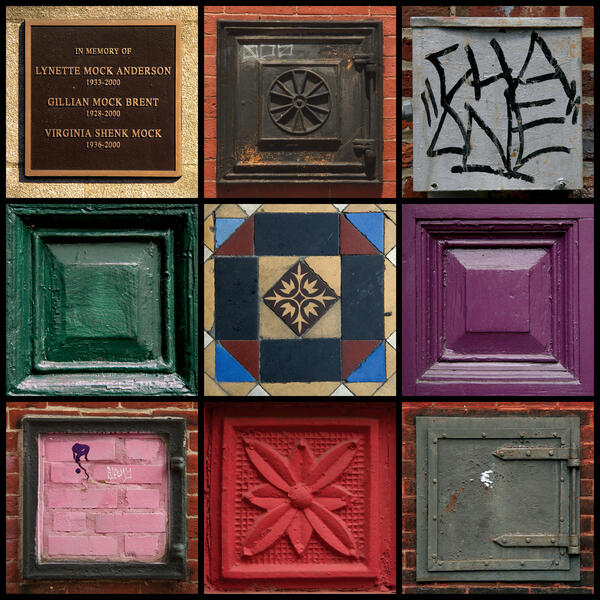 Bolton Hill, Baltimore (2016)This is a 3 x 3 grid of nine square items I found while exploring the Bolton Hill neighborhood of Baltimore, MD.
Bolton Hill, Baltimore (2016)This is a 3 x 3 grid of nine square items I found while exploring the Bolton Hill neighborhood of Baltimore, MD. -
 Downtown Baltimore (2015–2016)This is a 3 x 3 grid of nine square items I found while exploring downtown Baltimore, MD.
Downtown Baltimore (2015–2016)This is a 3 x 3 grid of nine square items I found while exploring downtown Baltimore, MD. -
 Inner Harbor, Baltimore (2016)This is a 3 x 3 grid of nine square items I found while exploring the Bolton Hill neighborhood of Baltimore, MD.
Inner Harbor, Baltimore (2016)This is a 3 x 3 grid of nine square items I found while exploring the Bolton Hill neighborhood of Baltimore, MD. -
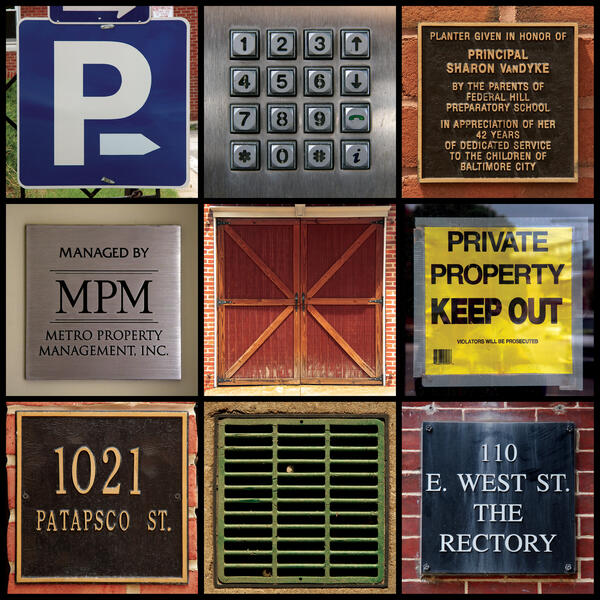 Federal Hill, Baltimore (2016)This is a 3 x 3 grid of nine square items I found while exploring the Federal Hill neighborhood of Baltimore, MD.
Federal Hill, Baltimore (2016)This is a 3 x 3 grid of nine square items I found while exploring the Federal Hill neighborhood of Baltimore, MD. -
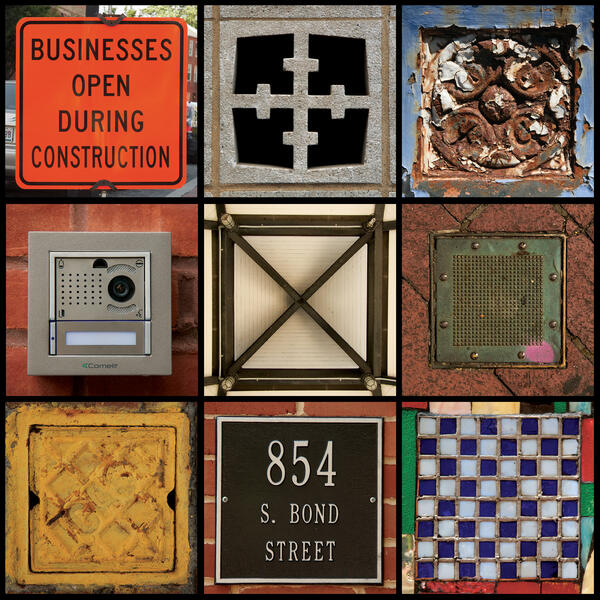 Fells Point, Baltimore (2014–2016)This is a 3 x 3 grid of nine square items I found while exploring the Fells Pointl neighborhood of Baltimore, MD.
Fells Point, Baltimore (2014–2016)This is a 3 x 3 grid of nine square items I found while exploring the Fells Pointl neighborhood of Baltimore, MD. -
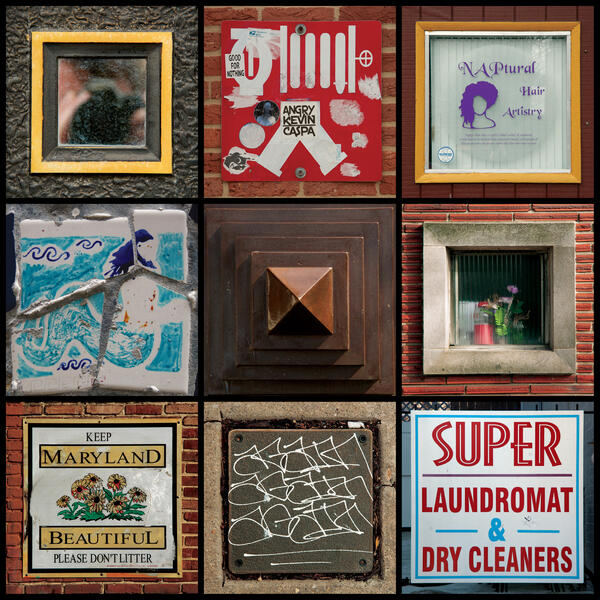 Charles Village, Baltimore (2017)This is a 3 x 3 grid of nine square items I found while exploring the Charles Village neighborhood of Baltimore, MD.
Charles Village, Baltimore (2017)This is a 3 x 3 grid of nine square items I found while exploring the Charles Village neighborhood of Baltimore, MD. -
 Remington, Baltimore (2017)This is a 3 x 3 grid of nine square items I found while exploring the Remington neighborhood of Baltimore, MD.
Remington, Baltimore (2017)This is a 3 x 3 grid of nine square items I found while exploring the Remington neighborhood of Baltimore, MD. -
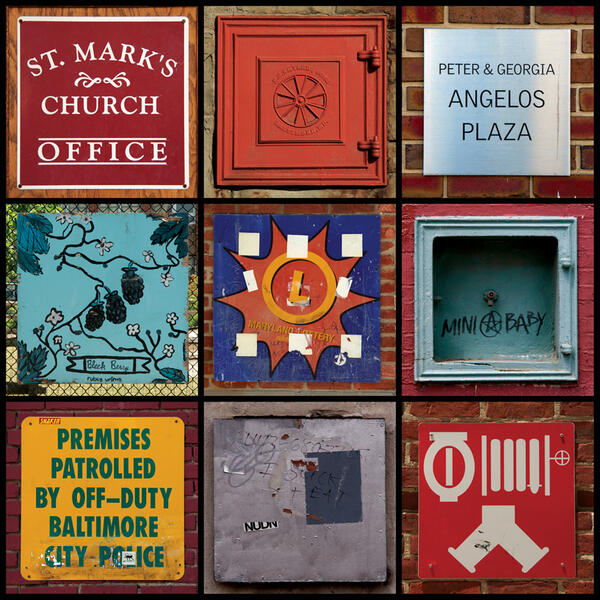 Station North, Baltimore (2016)This is a 3 x 3 grid of nine square items I found while exploring the Station North Arts District of Baltimore, MD.
Station North, Baltimore (2016)This is a 3 x 3 grid of nine square items I found while exploring the Station North Arts District of Baltimore, MD.
The Square Project: Part Two
-
 London (2007)This is a 3 x 3 grid depicting nine square items I found while exploring London, UK.
London (2007)This is a 3 x 3 grid depicting nine square items I found while exploring London, UK. -
 New York City (2007–2017)This is a 3 x 3 grid depicting nine square items I found while exploring New York, NY.
New York City (2007–2017)This is a 3 x 3 grid depicting nine square items I found while exploring New York, NY. -
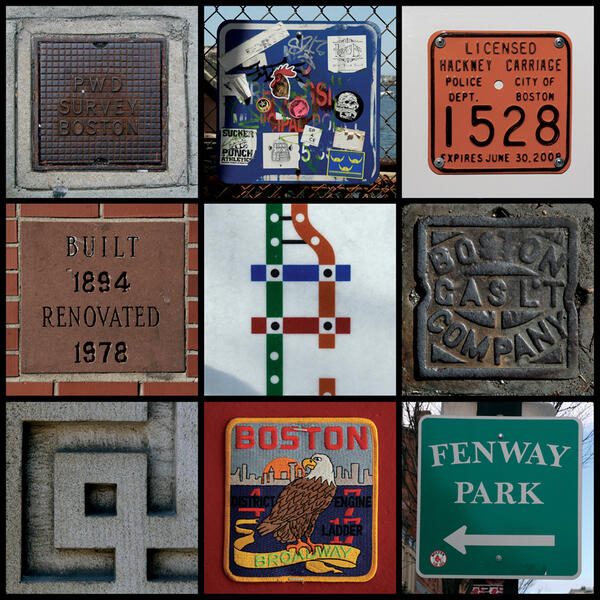 Boston (2008–2014)This is a 3 x 3 grid depicting nine square items I found while exploring Boston, MA.
Boston (2008–2014)This is a 3 x 3 grid depicting nine square items I found while exploring Boston, MA. -
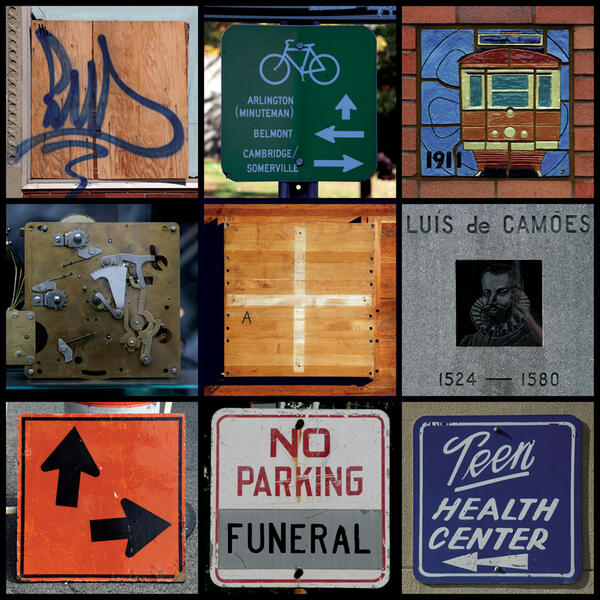 Cambridge (2008–2012)This is a 3 x 3 grid depicting nine square items I found while exploring Cambridge, MA.
Cambridge (2008–2012)This is a 3 x 3 grid depicting nine square items I found while exploring Cambridge, MA. -
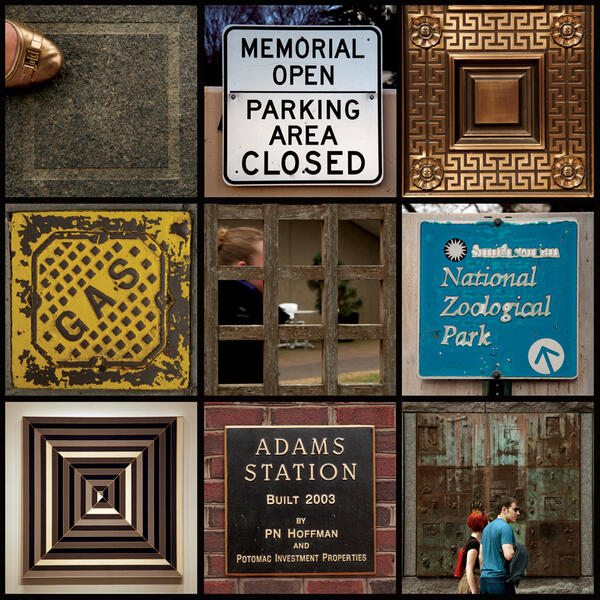 Washington, DC (2008–2017)This is a 3 x 3 grid depicting nine square items I found while exploring Washington, DC.
Washington, DC (2008–2017)This is a 3 x 3 grid depicting nine square items I found while exploring Washington, DC. -
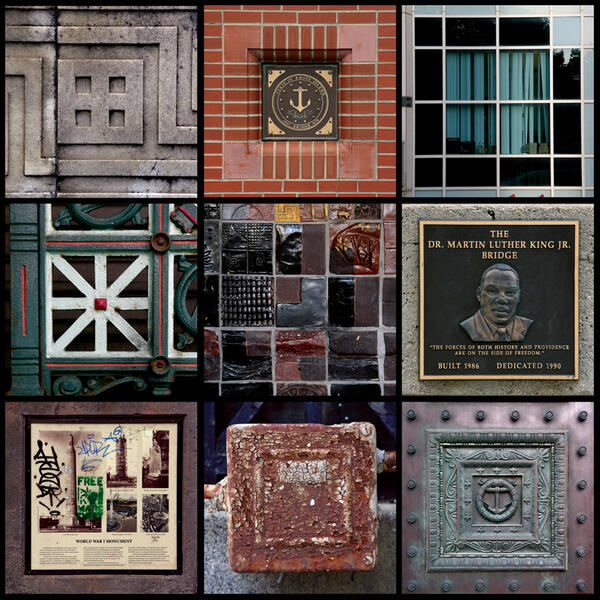 Providence (2009–2010)This is a 3 x 3 grid depicting nine square items I found while exploring Providence, RI.
Providence (2009–2010)This is a 3 x 3 grid depicting nine square items I found while exploring Providence, RI. -
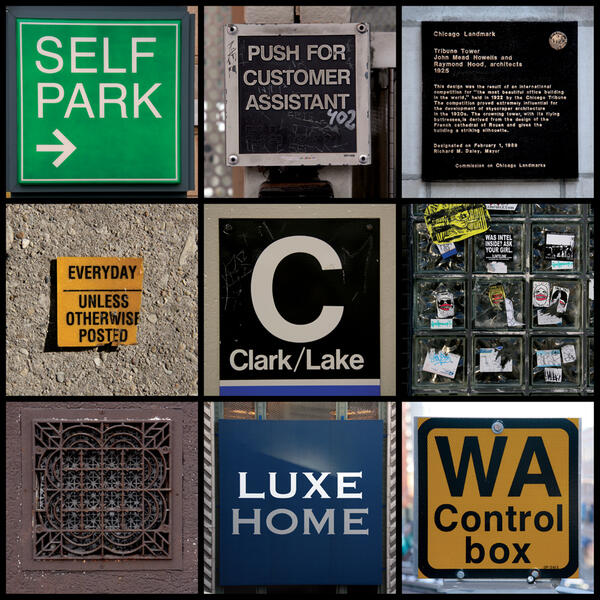 Chicago (2009)This is a 3 x 3 grid depicting nine square items I found while exploring Chicago, IL.
Chicago (2009)This is a 3 x 3 grid depicting nine square items I found while exploring Chicago, IL. -
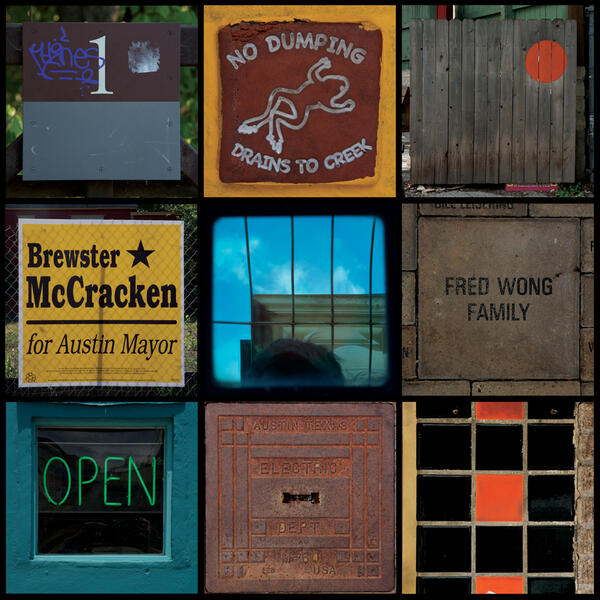 Austin (2009)This is a 3 x 3 grid depicting nine square items I found while exploring Austin, TX.
Austin (2009)This is a 3 x 3 grid depicting nine square items I found while exploring Austin, TX. -
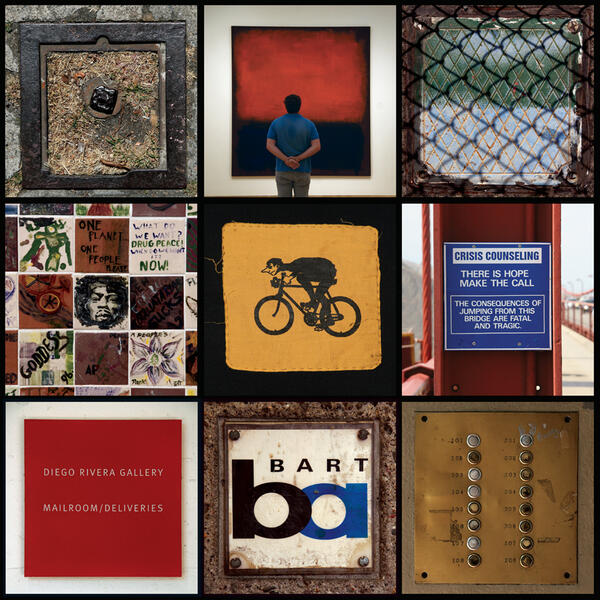 San Francisco (2009)This is a 3 x 3 grid depicting nine square items I found while exploring San Francisco, CA.
San Francisco (2009)This is a 3 x 3 grid depicting nine square items I found while exploring San Francisco, CA. -
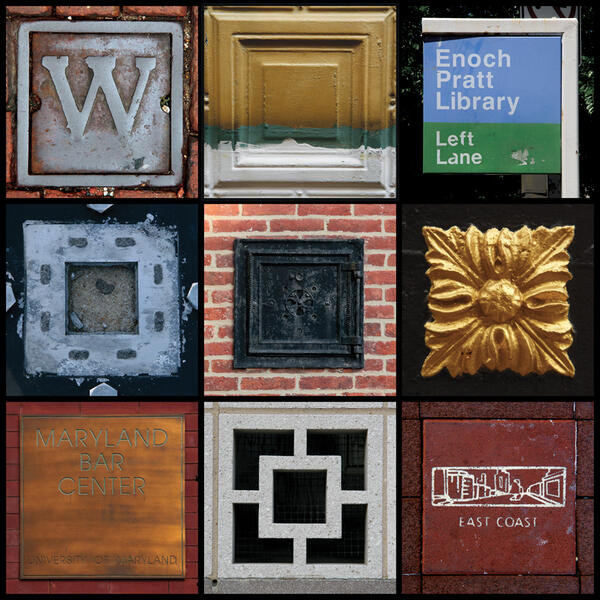 Baltimore (2011–2016)This is a 3 x 3 grid depicting nine square items I found while exploring Baltimore City, MD.
Baltimore (2011–2016)This is a 3 x 3 grid depicting nine square items I found while exploring Baltimore City, MD.
Square Calendar #2 (2020)
The square also represents time, with its four equal sides suggesting the four seasons, and in the form of the calendar demarcating the days of the week in a grid of squares. In 2016, I made calendars based on my square series and mailed them out as holiday gifts to colleagues, family members, and friends. Included in the square mailers were 16 square photographs representing the 12 months and 4 seasons, plus the necessary hardware for assembling a wall hanging. Four years later, I made Square Calendar #2.
-
 Square Calendar #2: Calendar Front (2020)This is the design for the front of “Square Calendar #2,” depicting the months of the year in 12 digital photographs.
Square Calendar #2: Calendar Front (2020)This is the design for the front of “Square Calendar #2,” depicting the months of the year in 12 digital photographs. -
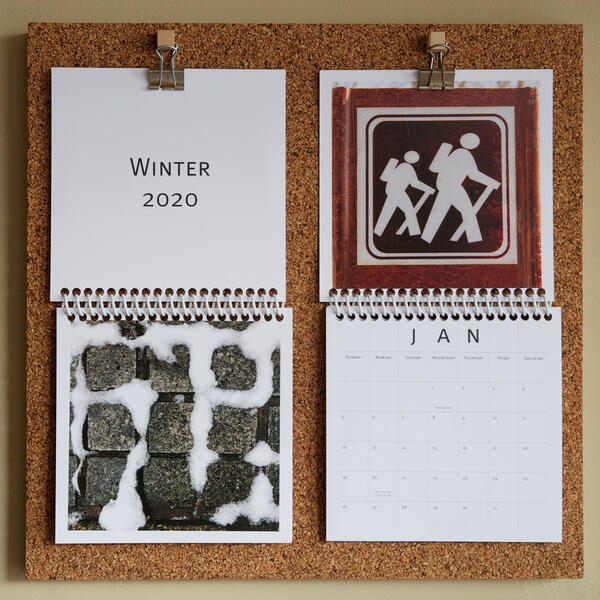 Square Calendar #2: Winter / January (2020)This digital photograph depicts a wall calendar I designed, displaying the winter season and the month of January in this particular configuration.
Square Calendar #2: Winter / January (2020)This digital photograph depicts a wall calendar I designed, displaying the winter season and the month of January in this particular configuration. -
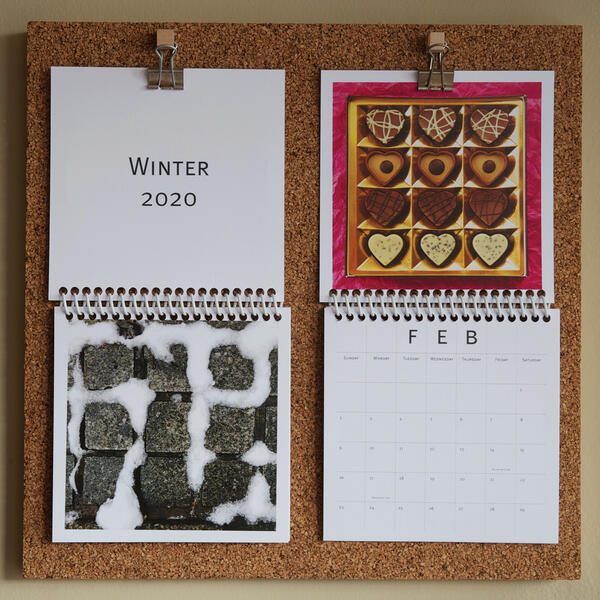 Square Calendar #2: Winter / February (2020)This digital photograph depicts a wall calendar I designed, displaying the winter season and the month of February in this particular configuration.
Square Calendar #2: Winter / February (2020)This digital photograph depicts a wall calendar I designed, displaying the winter season and the month of February in this particular configuration. -
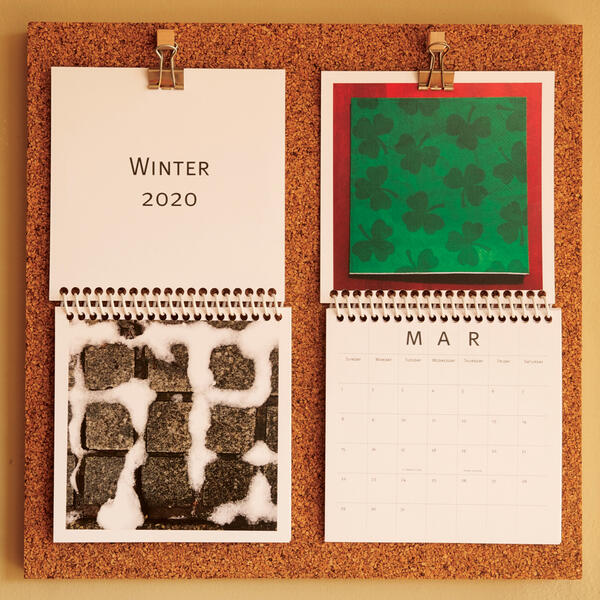 Square Calendar #2: Winter / March (2020)This digital photograph depicts a wall calendar I designed, displaying the winter season and the month of March in this particular configuration.
Square Calendar #2: Winter / March (2020)This digital photograph depicts a wall calendar I designed, displaying the winter season and the month of March in this particular configuration. -
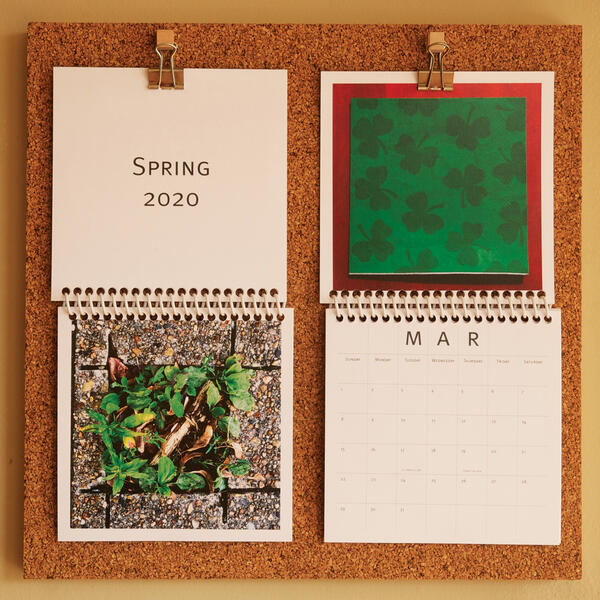 Square Calendar #2: Spring / March (2020)This digital photograph depicts a wall calendar I designed, displaying the spring season and the month of March in this particular configuration.
Square Calendar #2: Spring / March (2020)This digital photograph depicts a wall calendar I designed, displaying the spring season and the month of March in this particular configuration. -
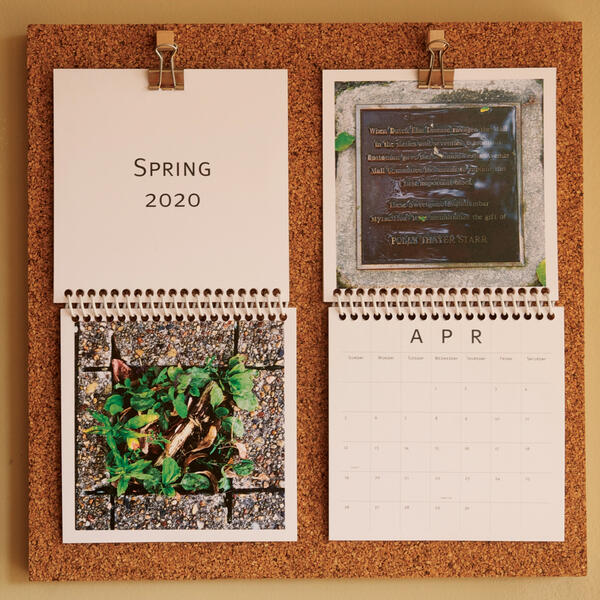 Square Calendar #2: Spring / April (2020)This digital photograph depicts a wall calendar I designed, displaying the spring season and the month of April in this particular configuration.
Square Calendar #2: Spring / April (2020)This digital photograph depicts a wall calendar I designed, displaying the spring season and the month of April in this particular configuration. -
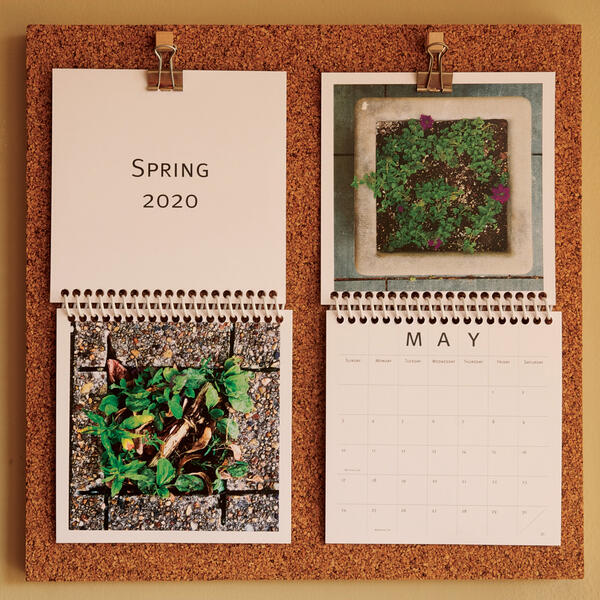 Square Calendar #2: Spring / May (2020)This digital photograph depicts a wall calendar I designed, displaying the spring season and the month of May in this particular configuration.
Square Calendar #2: Spring / May (2020)This digital photograph depicts a wall calendar I designed, displaying the spring season and the month of May in this particular configuration. -
 Square Calendar #2: Spring / June (2020)This digital photograph depicts a wall calendar I designed, displaying the spring season and the month of June in this particular configuration.
Square Calendar #2: Spring / June (2020)This digital photograph depicts a wall calendar I designed, displaying the spring season and the month of June in this particular configuration. -
 Square Calendar #2: Summer / June (2020)This digital photograph depicts a wall calendar I designed, displaying the summer season and the month of June in this particular configuration.
Square Calendar #2: Summer / June (2020)This digital photograph depicts a wall calendar I designed, displaying the summer season and the month of June in this particular configuration. -
 Square Calendar #2: Summer / July (2020)This digital photograph depicts a wall calendar I designed, displaying the summer season and the month of July in this particular configuration.
Square Calendar #2: Summer / July (2020)This digital photograph depicts a wall calendar I designed, displaying the summer season and the month of July in this particular configuration.
Square Calendar #2 (2020) + Square Calendar #1 (2016)
-
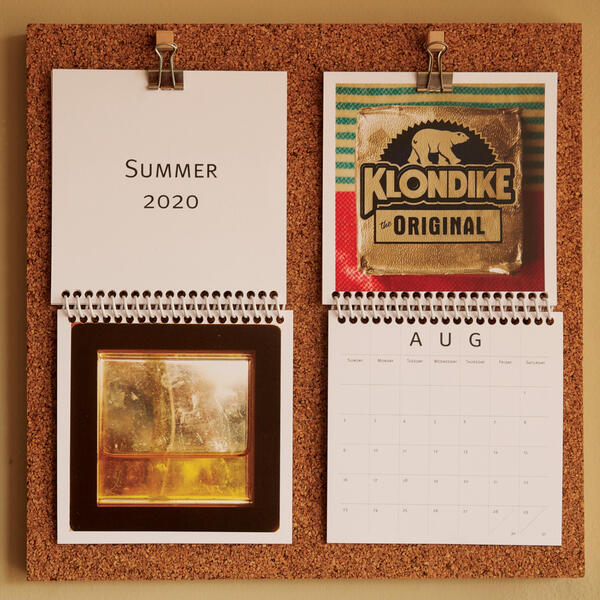 Square Calendar #2: Summer / August (2020)This digital photograph depicts a wall calendar I designed, displaying the summer season and the month of August in this particular configuration.
Square Calendar #2: Summer / August (2020)This digital photograph depicts a wall calendar I designed, displaying the summer season and the month of August in this particular configuration. -
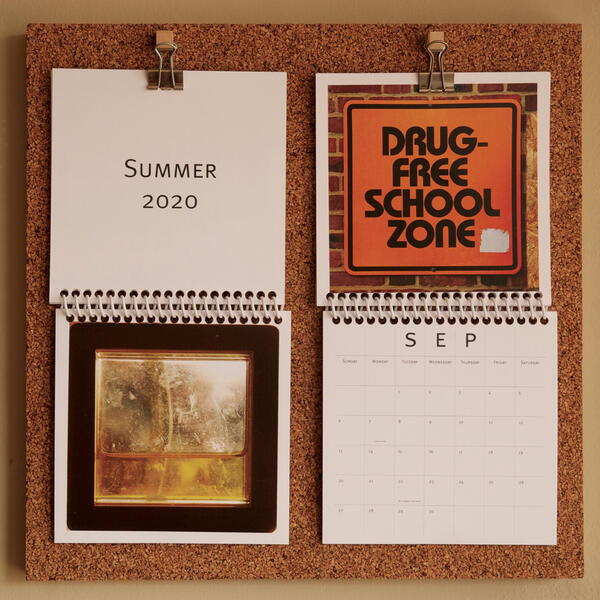 Square Calendar #2: Summer / September (2020)This digital photograph depicts a wall calendar I designed, displaying the summer season and the month of September in this particular configuration.
Square Calendar #2: Summer / September (2020)This digital photograph depicts a wall calendar I designed, displaying the summer season and the month of September in this particular configuration. -
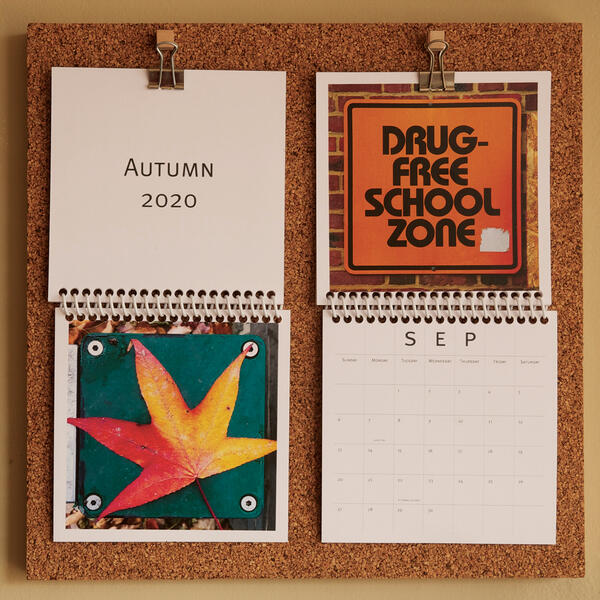 Square Calendar #2: Summer / September (2020)This digital photograph depicts a wall calendar I designed, displaying the fall season and the month of September in this particular configuration.
Square Calendar #2: Summer / September (2020)This digital photograph depicts a wall calendar I designed, displaying the fall season and the month of September in this particular configuration. -
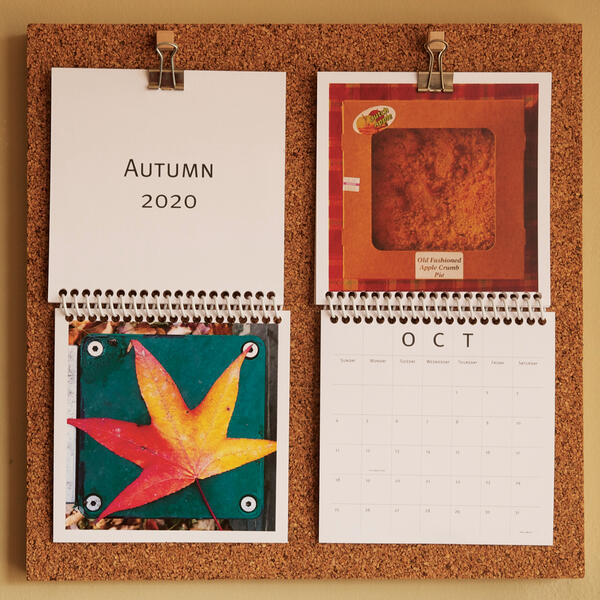 Square Calendar #2: Fall / October (2020)This digital photograph depicts a wall calendar I designed, displaying the fall season and the month of October in this particular configuration.
Square Calendar #2: Fall / October (2020)This digital photograph depicts a wall calendar I designed, displaying the fall season and the month of October in this particular configuration. -
 Square Calendar #2: Fall / November (2020)This digital photograph depicts a wall calendar I designed, displaying the fall season and the month of November in this particular configuration.
Square Calendar #2: Fall / November (2020)This digital photograph depicts a wall calendar I designed, displaying the fall season and the month of November in this particular configuration. -
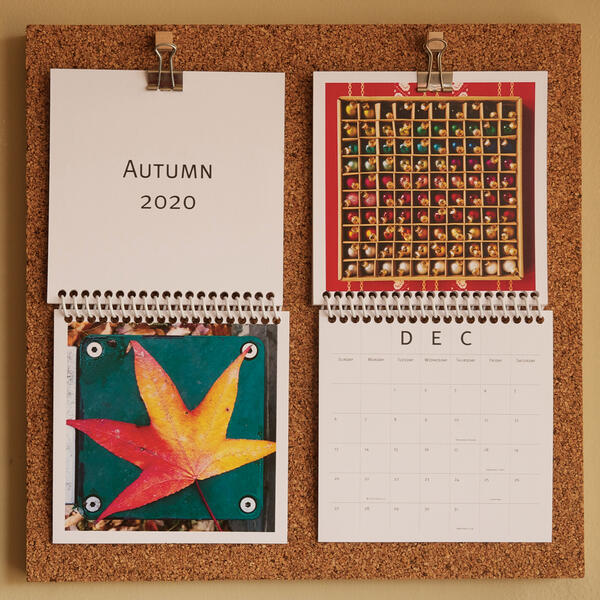 Square Calendar #2: Fall / December (2020)This digital photograph depicts a wall calendar I designed, displaying the fall season and the month of December in this particular configuration.
Square Calendar #2: Fall / December (2020)This digital photograph depicts a wall calendar I designed, displaying the fall season and the month of December in this particular configuration. -
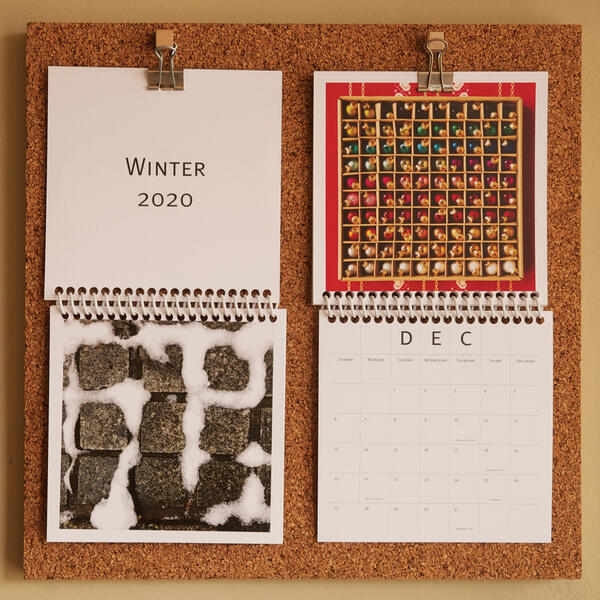 Square Calendar #2: Winter / December (2020)This digital photograph depicts a wall calendar I designed, displaying the winter season and the month of December in this particular configuration.
Square Calendar #2: Winter / December (2020)This digital photograph depicts a wall calendar I designed, displaying the winter season and the month of December in this particular configuration. -
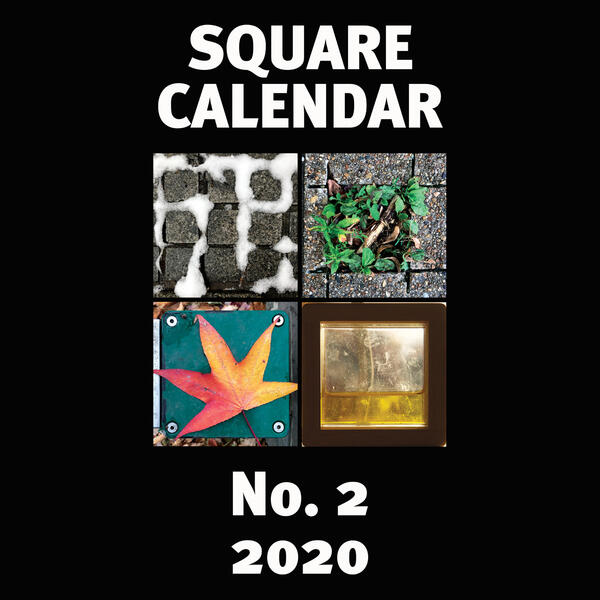 Square Calendar #2: Calendar Back (2020)This is the design for the back of “Square Calendar #2,” depicting the four seasons in four digital photographs.
Square Calendar #2: Calendar Back (2020)This is the design for the back of “Square Calendar #2,” depicting the four seasons in four digital photographs. -
 Square Calendar #1: Opening the Mailer (2016)This digital photograph depicts the handmade mailer for "Square Calendar #1" (2016).
Square Calendar #1: Opening the Mailer (2016)This digital photograph depicts the handmade mailer for "Square Calendar #1" (2016). -
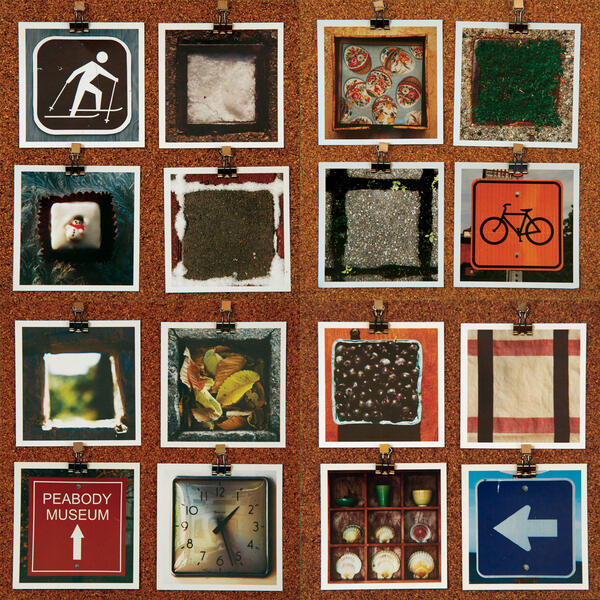 Square Calendar #1 (2016)This digital photograph depicts the wall hanging format of "Square Calendar #1" (2016).
Square Calendar #1 (2016)This digital photograph depicts the wall hanging format of "Square Calendar #1" (2016).


